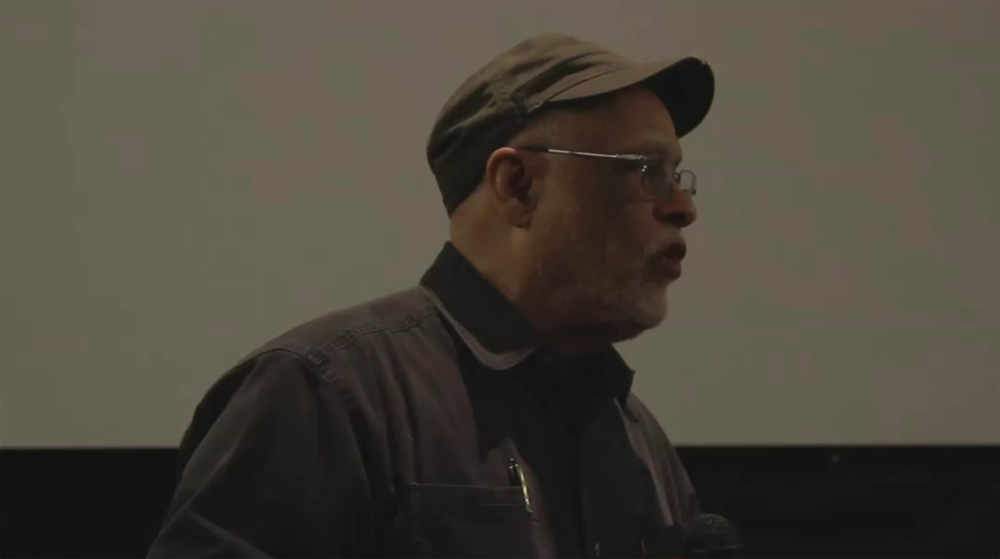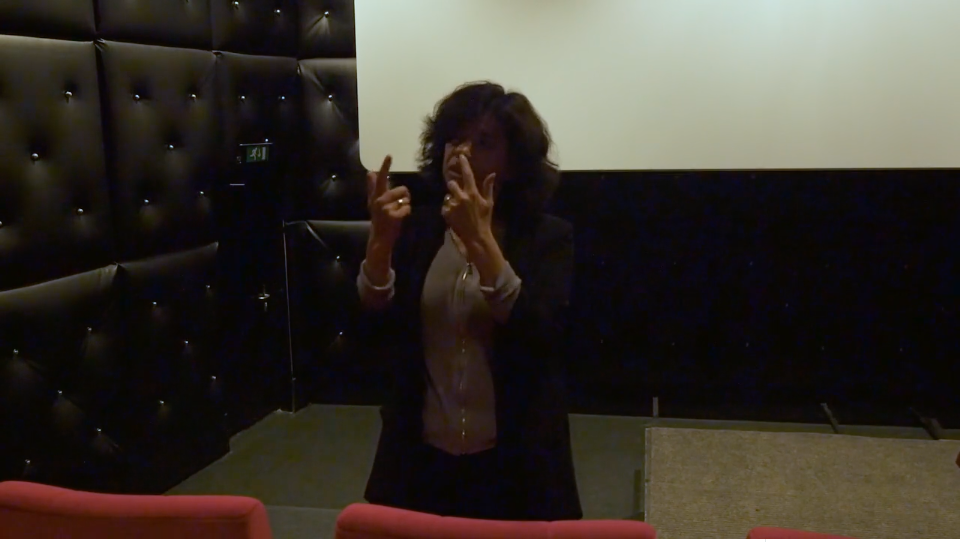Series of talks, in collaboration with Argos, Auguste Orts and Courtisane, with support of VGC. In the context of the research project “Figures of Dissent (Cinema of Politics, Politics of Cinema)” (KASK / HoGent)
How can the relation between cinema and politics be thought today? Between a cinema of politics and a politics of cinema, between politics as subject and as practice, between form and content? From Vertov’s cinematographic communism to the Dardenne brothers’ social realism, from Straub-Huillet’s Brechtian dialectics to the aesthetic-emancipatory figures of Pedro Costa, from Guy Debord’s radical anti-cinema to the mainstream pamphlets of Oliver Stone, the quest for cinematographic representations of political resistance has taken many different forms and strategies over the course of a century. The multiple choices and pathways that have gradually been adopted, constantly clash with the relationship between theory and practice, representation and action, awareness and mobilization, experience and change. Is cinema today regaining some of its old forces and promises? Are we once again confronted with the questions that Serge Daney asked a few decades ago? As the French film critic wrote: “How can political statements be presented cinematographically? And how can they be made positive?”. These issues are central in a series of conversations in which contemporary perspectives on the relationship between cinema and politics are explored.
Video or audio registrations of these conversations are provided on this page if available and authorized.
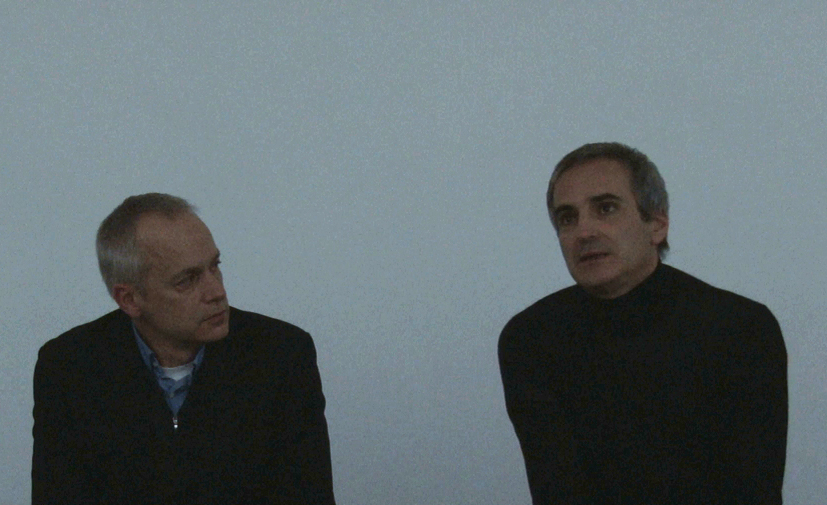
Olivier Assayas & Eric de Bruyn
Argos, Brussels, 22 November 2012. In the context of a retrospective program on the work of Olivier Assayas (Cinematek, November 2012).
What does one of the most celebrated film makers of the post-Nouvelle Vague generation have in common with Situationist International’s erstwhile figurehead? One was just thirteen during the uprising of May 1968, while the other is considered one of its driving forces. It was not until later, enthused by the echo of this revolutionary experience and the wave of the 70s counter-culture, that Olivier Assayas turned to the work of Guy Debord, which he continues to treasure to this day as “the only place where I have always felt life, resistance and history intact”. About this prominent period, Assayas published in 2005 the booklet Une adolescence dans l’apres mai, which also served as a blueprint for his latest film, Après Mai. Assayas mentions in his text, written as a letter to Debord’s widow, the desperation of his generation, the collapse of the left, the advance of globalisation and mediatisation, the tyranny of a consensus society, and in stark contrast to all of this, Debord’s unremitting poetry of resistance: “he tells us that soon it will be too late. That lost opportunities do not present themselves again. But also that thought can shake up the city. Not only has he said so, he has done so and set an example; so that everyone, deep down, knows that it can be done.” In this first DISSENT ! session, Assayas enters into dialogue with art historian Eric de Bruyn, about Debord’s lasting influence, not least in the shape of his films, which Assayas managed to rescue from obscurity a few years ago. What contemporary resonance does Debord’s work have ? And how can his films inspire a cinema about, and of, today?
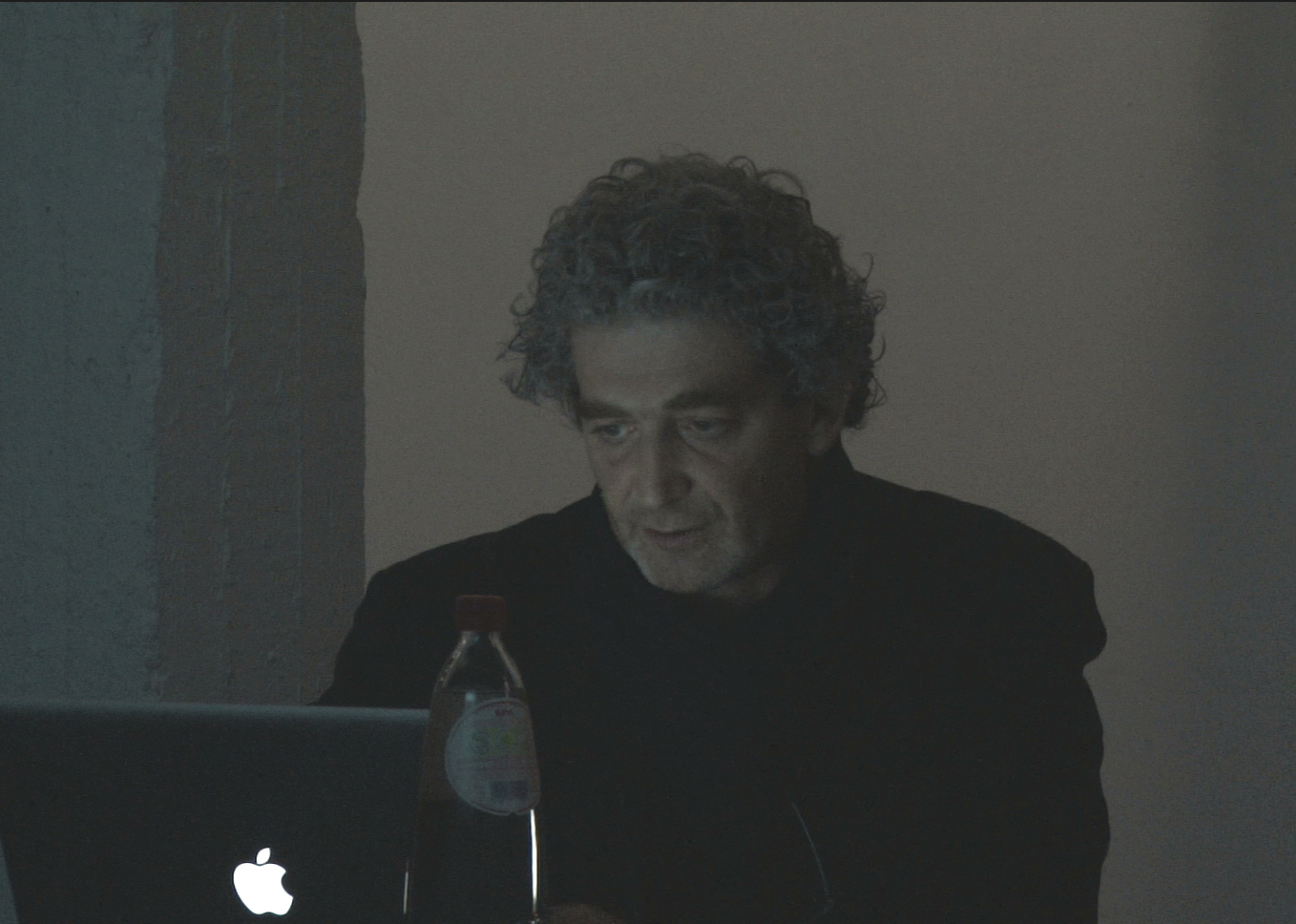
Eyal Sivan
Argos, Brussels, 12 December 2012. On 13 December Eyal Sivan also discussed The Specialist. Portrait of a Modern Criminal (Eyal Sivan, 1999) at KASKcinema.
“Shot and counter shot do not imply any form of similarity or equality but they pose a question.” According to Jean-Luc Godard, montage, as the essence of cinema, does not solely consist of putting one image in juxtaposition or in opposition to another or to draw together heterogeneous elements; its purpose is rather to create a space of thought in which the possibility exists that one reality inhabits another. This stance also characterises Godard’s approach to two recurrent themes that form a constant thread throughout his oeuvre: the Jewish question and the Palestinian question. The Jewish issue AND the Palestinian issue, Jew AND Muslim: bringing up these connections promptly instigate criticism and discord. This “forbidden montage” is the central theme of the eponymous online project (montageinterdit.net) developed by documentary filmmaker Eyal Sivan. The project aims to generate critical reflections on montage and its possible meanings within a political debate.According to Sivan, by using a databank of fragments from Godard’s work, the project seeks to “show that the islamophobia and racism now spreading through Europe have their roots in the Jewish question and antisemitism”. In this DISSENT! session Sivan discusses what this “forbidden montage” amounts to. What does it mean to bring two elements together and weigh one up against the other with the aid of a montage as, dixit Godard, “the scales of justice”?
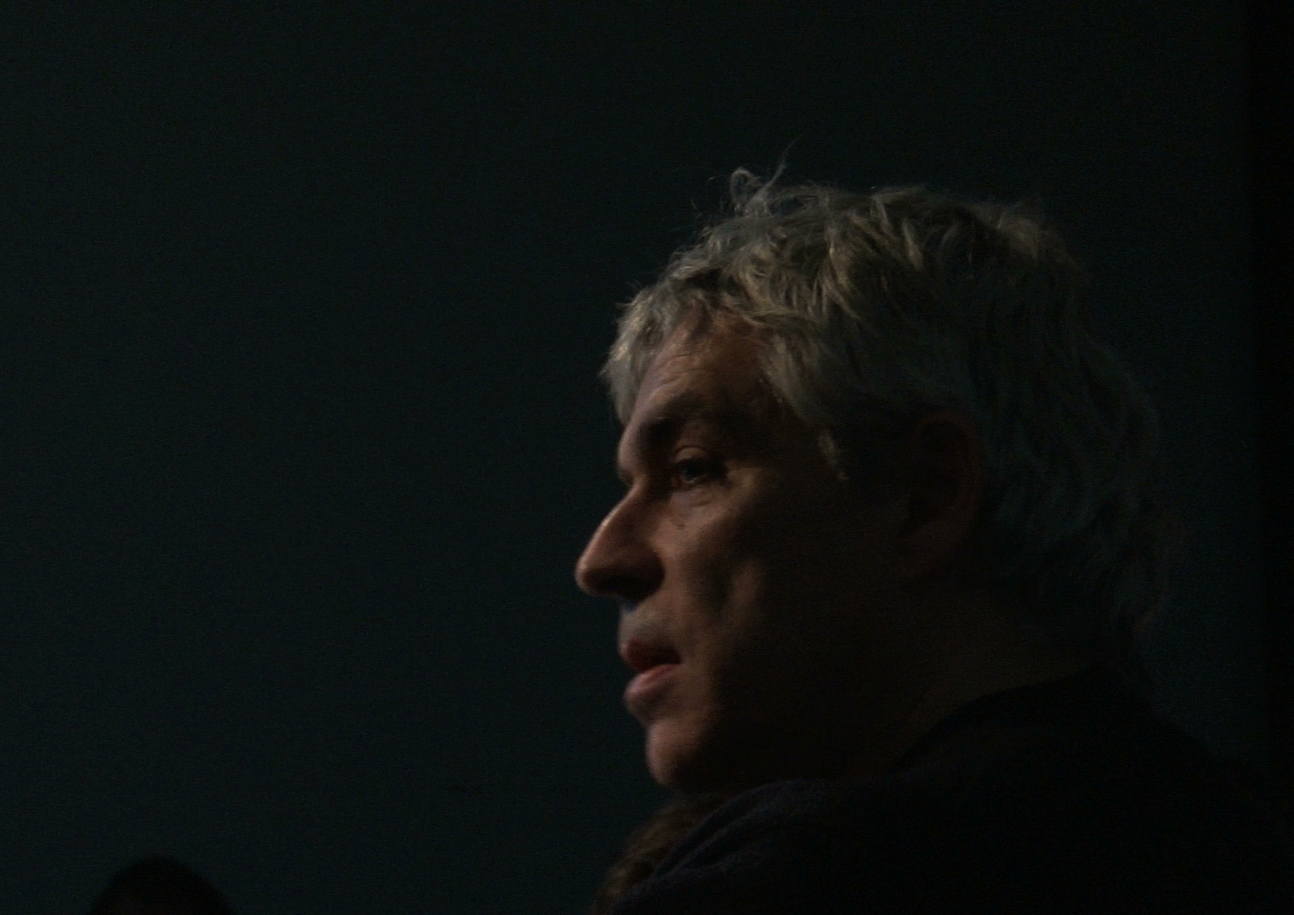
Pedro Costa
Argos, Brussels, 2 February 2013.
“We have to do away with this notion of urgency associated with politics, because it’s the contrary of love. That’s where it starts. Politics is love.” The politics of Pedro Costa’s cinema has nothing to do with the instructive demonstration of injustice or the uncovering of mechanisms of exploitation or repression, but with a committed search for an approach that lives up to the capacity of anyone. This politics is most present in the films he has been making, since the mid 1990’s, in Fontainhas, a poor and insular Lisbon neighborhood, where he uses minimal means to depict its habitants in all their grandeur. This is a cinema of desire and conviction: the desire to take the time and the risk to capture the essence of people and things, the conviction that cinema not only has to witness the wealth of the world – the wealth belonging to anyone – but also has to return it, as condensations of light and color, bodies and objects, speech and silence. In this sense Costa’s work has a lot in common with the films of Jean-Marie Straub en Danièle Huillet, which he once described as “the fastest, the most furious, the most beautiful, sensual, ancient, modern.” While critical attention is all too often directed at the communist world view of Straub-Huillet, Costa particularly draws from the way in which they give cinematographic form to their ideas, as an unique and rigorous play of materialism, mysticism and humanism. In this DISSENT ! session Pedro Costa will use fragments from Où gît votre sourire enfoui? (2001), his portrait of Straub-Huillet, to discuss the ethics and politics underpinning their work. In the words of Jean-Marie Straub: “no political film without morals, no political film without theology, no political film without mystique.”
[audio:http://www.diagonalthoughts.com/wp-content/uploads/2013/11/pedro-costa-dissent.mp3]A transcript of this talk can be found here
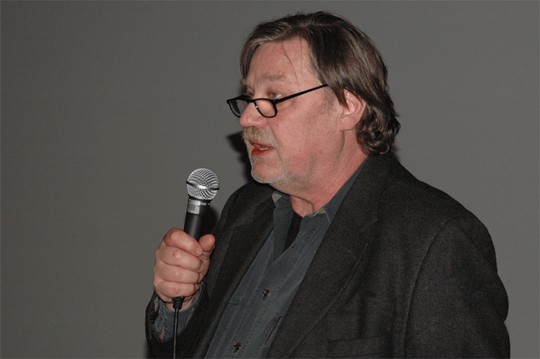
Hartmut Bitomsky
Galeries, Brussels, 28 March 2013. Preceded by a screening of Deutschlandbilder(Hartmut Bitomsky & Heiner Mühlenbrock, 1983-84).
“As once stated in a Brecht play: if two things come together, you need a third thing. The third thing, back then, was political film making”. For about ten years, the film work of Hartmut Bitomsky could hardly be dissociated from that of Harun Farocki. In the second half of the 1960’s they both formed the backbone of the Projektgruppe Schülerfilm, an initiative of Berlin students building on the leftist intellectual legacy by combining militant cinema and Brechtian didacticism. After their studies, they continued to make a number of films together, and consequently co-founded the Filmkritik magazine as an outlet for their cinephile enthusiasm. But it was only a matter of time before their ways parted: “Farocki comes from Eisenstein, and I come from Rossellini. He is very fond of montage, I am more interested in life”. Although they are both exploring a critical-essayistic perspective, Bitomsky considers documentary film as an instrument for articulation rather than for deconstruction. So, each film he has been making since the 1970’s provides some sort of map, its routes leading us through unruly territories, covering themes such as memory, history, technology and image culture. In this fourth installment of the DISSENT ! series a selection of Bitomsky’s films will serve as the starting point for a conversation on cinema, documentary practice, image and reality.
[audio:http://www.diagonalthoughts.com/wp-content/uploads/2013/05/bitomsky.mp3]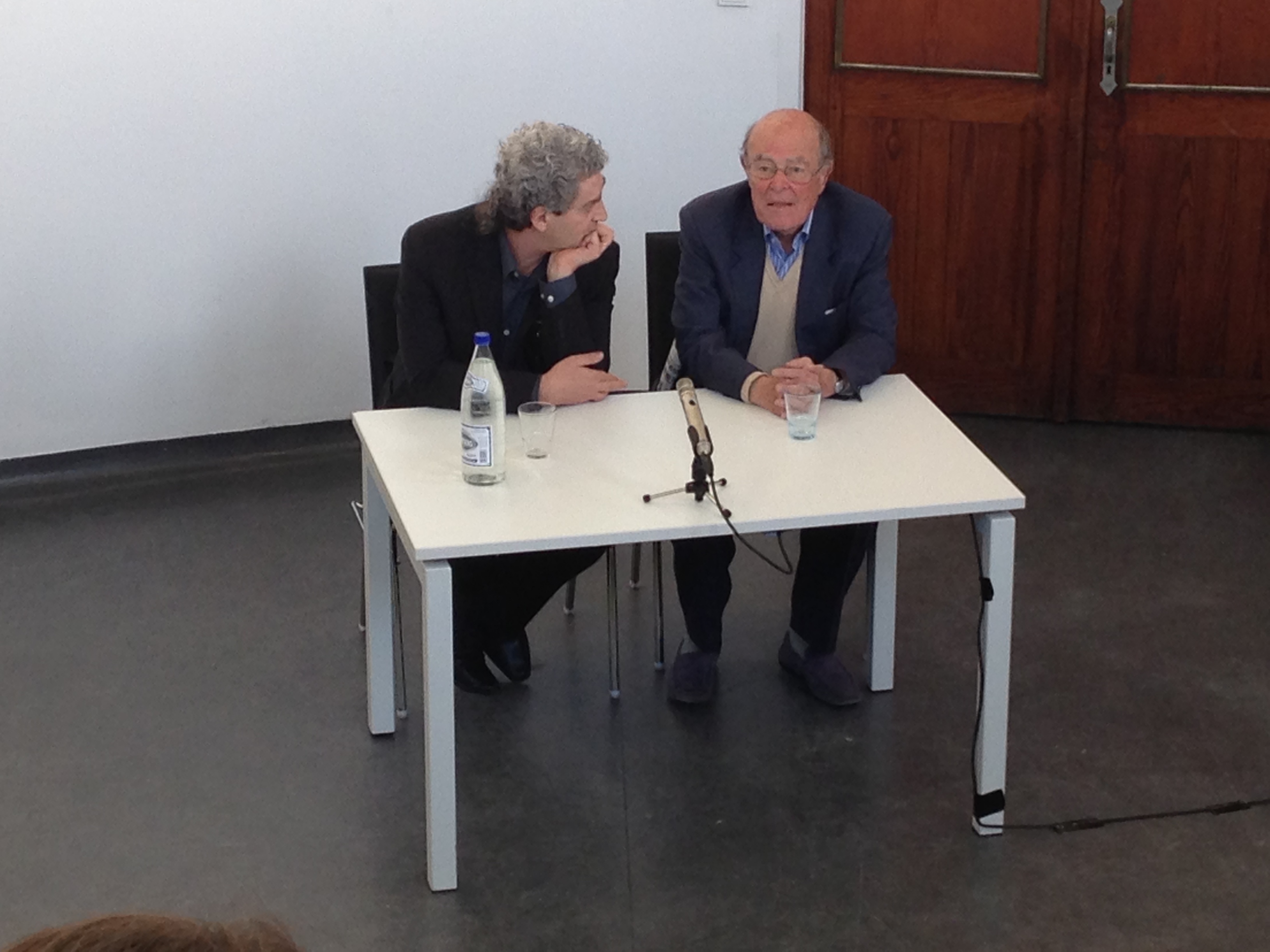
Marcel Ophuls & Eyal Sivan
KASK, Gent, 18 April 2013. In conjunction with the “Artist in Focus” program around the work of Marcel Ophuls (Courtisane Festival 2013).
Resistance. If there is a single word that characterizes the work of Marcel Ophuls, this is it: resistance to every form of injustice and banalisation, resistance to the prevailing dogmas of documentary cinema. It is an attitude that is marked both by a whole-hearted abhorrence (for indifference) and by passionate love (for narrative film). The one is a response to his experiences during WW II, the other a legacy from his father, the famous director Max Ophuls. The result is an uncompromising cinema that for four decades has had no equal in blazing a trail through the 20th century’s shadowy realm: occupation and collaboration during the Vichy regime in Le Chagrin et la Pitié (1969), the Troubles in Northern Ireland in A Sense of Loss (1972), war crimes in Nancy Germany and Vietnam in The Memory of Justice (1976), the siege of Sarajevo in Veillées d’armes (1994). Time and again, like a roguish Inspector Colombo, Ophuls makes his way through the heart of the conflict zone, in search of witnesses, in search of the story. Because Ophuls’s work primarily brings to mind the fact that the word “documentary” is always followed by the word “film”. This is a cinema that places structure above content, subjectivity above objectivity, discussion above pedagogy, a cinema that recognizes that documentary always equals “fiction” – a construction, a presence, a form. It is a cinema, finally, that refuses to make a distinction between “history” with or without a capital “H”, between a politics of the commonplace and the politics of the power apparatus, because that distinction, according to Ophuls, “forms the worst escape in life itself, the avoidance of every responsibility.”
A conversation between two accomplished advocates of documentary film, about cinema and history, montage and narration, and the role and responsibility of the filmmaker. Eyal Sivan already participated in a DISSENT ! session in december 2012. Marcel Ophuls is one of the Artists in Focus on the Courtisane Festival. The talk will be preceded by a screening of The Memory of Justice and followed by a screening of A Sense of Loss.
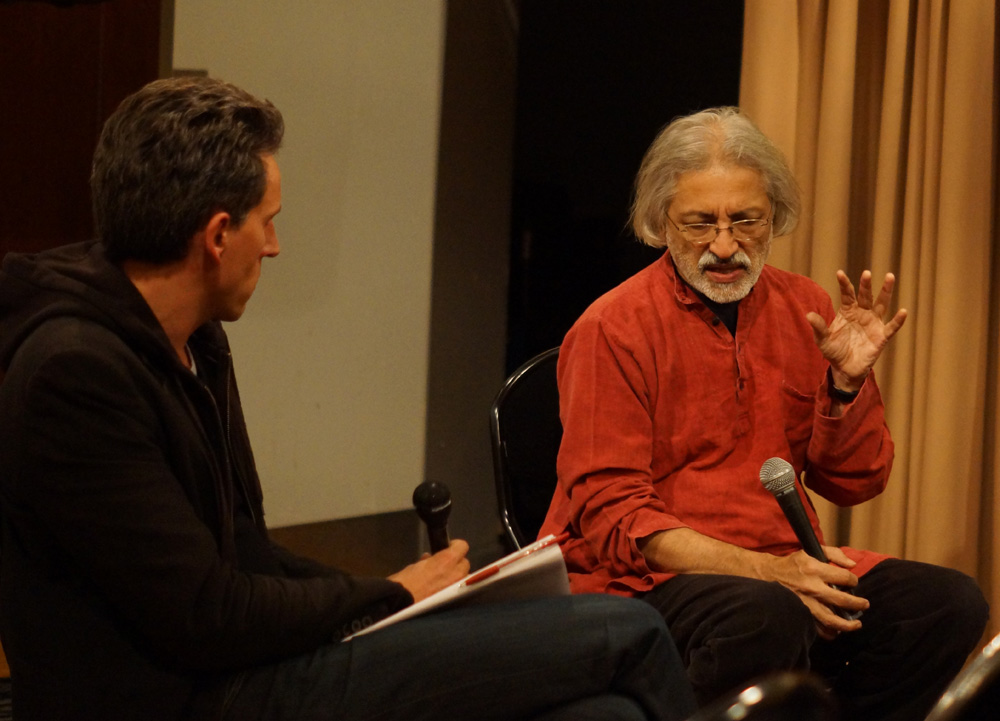
Anand Patwardhan
Flagey, Brussels, 8 November 2013. Preceded by a screening of Jai Bhim Comrade (Anand Patwardhan, 2011).
“I would like my films to make a difference in the real world. I’m not content to make a film and let it sit idle or let it go only to some film festival or museum and be appreciated by a tiny fraction of well-to-do people. I want the films to be in the mainstream and do as much as I can to get into that mainstream, so that they have an impact in the real world.”
– Anand Patwardhan
Behind the images of an aspiring pluralistic democracy and a rising economic superpower, there exists an other India. One that is swept by continuous waves of religious and ethnic violence, more often than not abetted by the highest levels of government and law enforcement. One that is haunted by an acute rise in mass poverty and social inequality, to some extent still hinging on the enduring legacy of the caste system. One that is driven by a quest for militarism, steeped in a long history of Partition and nationalist militancy. This reality of India, a complex and painful entanglement of religion, ethnicity, warfare, gender and class, has been systematically neglected by most if not all traditional mass media, locally as well as internationally. One could say that countering this indifference is exactly what defines the value and politics of Anand Patwardhan’s documentary work: the commitment to report on the harrowing injustices that are left on the wayside of contemporary history, to oppose the hegemonic discourses and intervene in the debates raging through the political landscape. Moreover, in relentlessly focussing on the struggles that his own country is facing, his films do not only address local questions, but also stir up some of the key issues playing out in the world at large, notably problems of identity, community, racism and populism. And yet, the practice in which his films are inscribed is not the informative or investigative model of journalism, it is altogether something different: cinema. It is precisely through the aesthetics of cinema that Patwardhan accomplishes what is perhaps the essential politics of his work: the construction of a multifaceted world in which actions, gestures and words are displaced from their frame of common assumptions of condition and fate, and are given as possible tools of empowerment.
[audio:http://www.diagonalthoughts.com/wp-content/uploads/2013/11/stoffelandanand.mp3]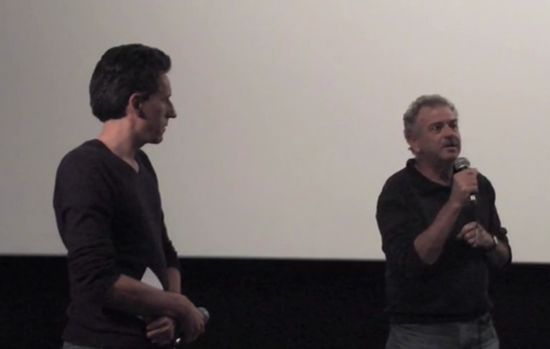
Avi Mograbi
Flagey, Brussels, 13 November 2013. Preceded by a screening of Once I Entered a Garden (Avi Mograbi, 2012).
“Quand vous faites du documentaire, vous devez accepter que la réalité influe en tant que réalité. Cela signifie: accepter d’être surpris, avoir son propre input, ne pas imposer ses propres idées sur la réalité même si on impose ses choix. Je ne prétends pas être un reflet de la réalité, c’est un reflet de ma façon dont la réalité doit être montrée. La question centrale, c’est celle de intégrité.”
– Avi Mograbi
“Once I entered a garden to smell the scent of the flowers, and distract my sad soul.” So begins the song that gave Avi Mograbi’s latest film its title. Crooned by the Syrian singer Asmahan, it tells the story of a love that has withered, of hearts that have been violently broken with little hope of mending. The garden in the title turns out to be not a promised land of dreams, but a forbidden garden with no room left for the other. It is this irresolvable tension between dream and reality, hope and impossibility, that lies at the very heart of the film; a tension that goes to the core of the enduring conflict between Israel and Palestine, the issue Mograbi’s work has been fervently dealing with for over two decades. But in contrast to his previous films, here he does not start out from a situation of opposition and antagonism, but one of participation and complicity; and the search that drives him and his companion is not one for agitation or revelation but rather for consolation. A whisper, rather than a cry. As is true of all memorable journeys, its path was not the one initially chosen. In wanting to make a film about his cousin, who used to openly cross the border between Israel and Lebanon, Mograbi calls upon his friend Ali Al-Azhari, a Palestinian who has been living most of his adult life in Tel-Aviv. As their partnership develops, the family tale of crossing borders makes way for a story about crossing identities: between “me” and “we”, “us” en “them”, Arab and Israeli. The bittersweet account of “sad souls” seeking refuge – at one point quite literary – in a forbidden garden prompts a surge of hope, as a bilingual dialogue on a history in common leaves us pondering the possibility of a common future. Perhaps that is what makes this, as Mograbi himself has argued, his most radical film yet: one proposing, like all tender tales of love and friendship, an experience of a world lived through the perspective of difference, rather than identity.
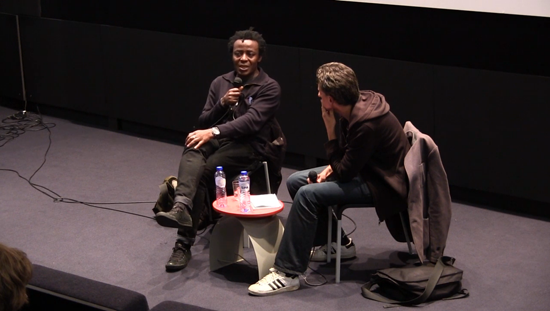
John Akomfrah
Cinematek, Brussels, 20 November 2013. Preceded by a screening of Handsworth Songs
(Black Audio Film Collective, 1986). On 21 November John Akomfrah also discussed Testament (Black Audio Film Collective, 1988) at KASKcinema.
“People assume that there are certain transcendental duties that Black filmmaking has to perform. They assume that and because of that Black filmmaking has to work with the understanding that it’s in a state of emergence. And because it is in a state of emergence its means always have to be guerilla means, war means, signposts of urgency. When that begins to inhibit questions of reflection- doubt, skepticism, intimacy and so on- then the categorical imperative does exactly what it is supposed to do- it imprisons.”
– John Akomfrah
“There are no stories in the riots, only the ghosts of other stories”. The phrase lingers over the film like a haunting refrain, reverberating across and between the ghostly traces of lived moments floating over the surface of the screen, somewhere between faded history and tainted memory, between the historical and the allegorical. Handsworth Songs was the first film John Akomfrah made with the Black Audio Film Collective, a group of artists, critics and filmmakers who set out to intervene in the cultural debate about black identity and representation that was raging all over Britain in the 1980’s. The spark that lit the fire was arguably the “civil disorder“ of 1981, when a wave of violent unrest swept through some of England’s inner cities. It was this event that painfully exposed the gap between the dominant discourses on ethnicity and “Britishness” and what was intimately felt and experienced by the “bastard children of 1968”, those who were profoundly shaped by what Derek Walcott called “the absence of ruins”. The challenge then, became one of generating counter-narratives, to look for aesthetical forms which would allow for a space to deconstruct the hegemonic voices and articulate states of belonging and displacement in dissensual ways. The question of form turned out to be one of dealing with absence: the lack of “ruins” made it necessary to look into the dark mirror of the past in search of images, words and sounds to attest to the intangible presence of diasporic histories. In Handsworth Songs, a response to the second Handsworth riots in 1985, Akomfrah discards the didactic panoptic impulse of the documentary film tradition in favor of a polytonic structure in which eye-witness accounts, mediated voice-overs and a mosaic of sounds intersperse with a poetic montage of archival footage. It is here, in unearthing the phantom narratives of the past to give them a new place in the present as a promise to the future, that can be found the essence of john Akomfrah’s work, up until this day.
This is a recording of the second talk with John Akomfrah that took place in Ghent after a screening of Testament (21 November 2013):
[audio:http://www.diagonalthoughts.com/wp-content/uploads/2014/04/akomfrah-kask.mp3]
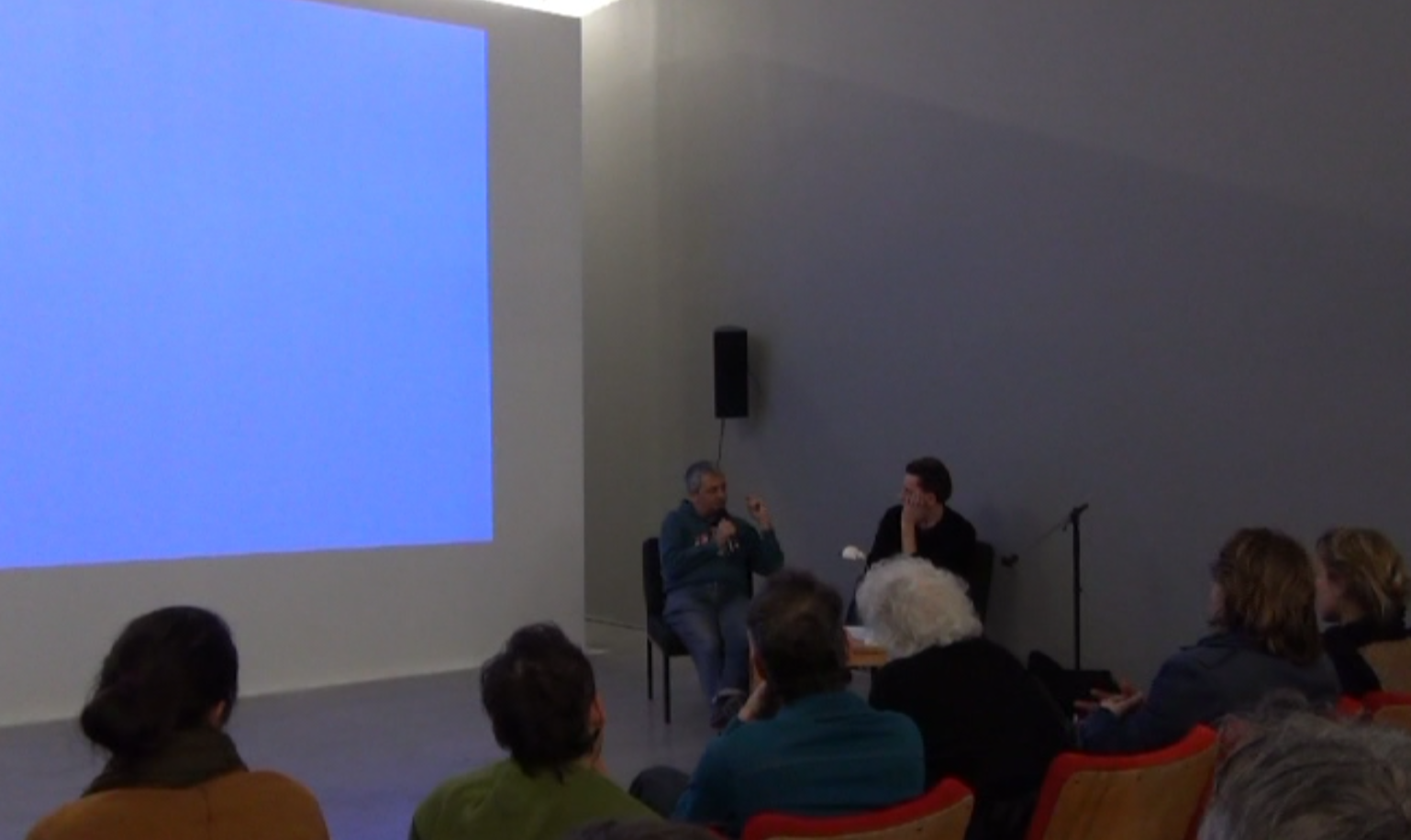
Akram Zaatari
Wiels, Brussels, 16 February 2014. Preceded by a screening of All Is Well on the Border Front (Akram Zaatari, 1997).
“There are works interested in the representation of war, whether fiction or documentary, and others interested in the tectonics of storytelling, writing history, and identifying and producing documents taking the war situation as a case or a base, because war is one of rare situations where notions of common logic collapse, and the notions of evidence in relation to documents and history have to be challenged.”
– Akram Zaatari
How to represent the ongoing struggles in the Middle East, a region in the throes of successive wars, excessive division, and abundant stereotyping? How to displace the dominant vision of never-ending violence, destruction, occupation, resistance, suffering, deeply entangled in what Jean-Luc Godard has referred to as the endless circulation of “brand images”? In his work Akram Zaatari tries to provide some possible responses to this challenge, particularly in regards to the legacy of conflict in his home country, Lebanon. Like many other Beiruti artists who have grown up during the Civil War (1975-1991), Zaatari is concerned with the construction and narrativization of its history and its present day reverberations. A substantial part of his work in film, photography and performance investigates the multiple tensions between memory and history, fiction and document, the public and the private, as a way to intervene in the dominant representation of history. With the use of archival images – partly drawn from the collection of the Arab Image Foundation, which he co-founded – attention is drawn to its constructedness, as well as to its gaps and fissures. In this Dissent! session we will mainly discuss Akram Zaatari’s cinematic work and his use of counter-narrative and docu-fictional strategies, which tend to prompt a fresh perspective on the forms and politics of fiction itself. Perhaps, as Jacques Rancière has suggested, it is above all in situations of radical uncertainty that “the real must be fictionalized in order to be thought.”
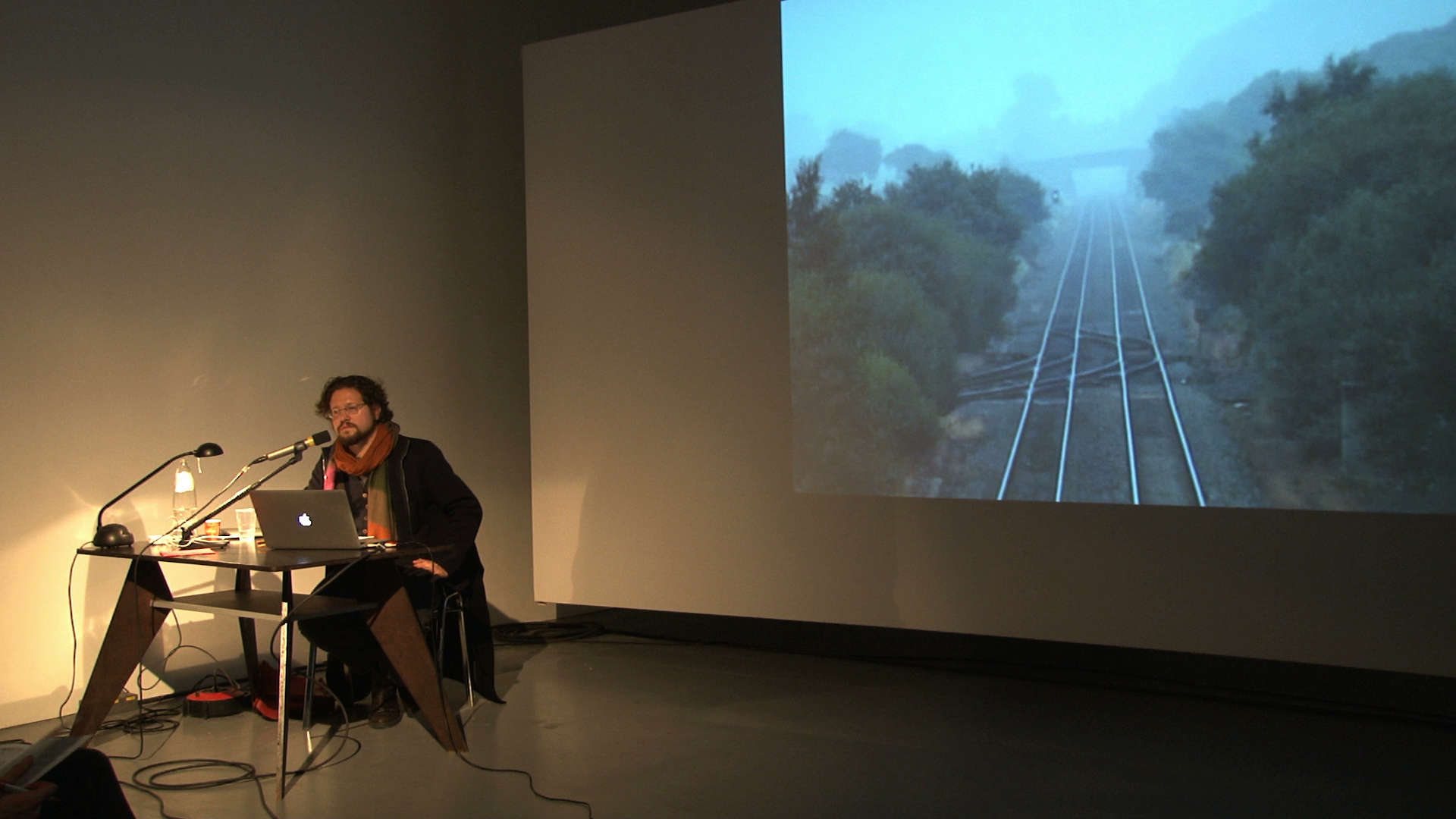
Alberto Toscano
Argos, Brussels, 18 February 2014.
“The dangers of didacticism, or the seemingly unbridgeable rift between cinematic drama and economic affectlessness, would seem to factor against attempting to film the crises of capitalism. Yet the works of past filmmakers and theorists struggling with the experience of economic collapse remain alive with lessons for the present, and the ongoing financial crisis has been the object of noteworthy, if rare, attempts to give narrative and visual form to its underlying causes and effects.”
– Jeff Kinkle & Alberto Toscano
“Representations of crisis need not be crises of representation“, wrote Alberto Toscano in ‘Filming the Crisis’, a piece he jointly wrote with Jeff Kinkle on various cinematic responses to the ongoing economic turmoil, from Oliver Stone’s Wall Street sequel to Michael Moore’s Capitalism: A Love Story and Hito Steyerl’s In Free Fall. The article rehearses some of the approaches that both authors have been exploring in view of their forthcoming book Cartographies of the Absolute, which aims to provide a critical survey and a series of reflections on the proliferation of works in the visual arts, cinema and literature which seek to tackle the representation of contemporary capitalism. The focus is on those works which in one way or another try to provide models or narratives that might allow us to orient ourselves around the global economic system, taking in account the associated dimensions that pose obdurate problems for plot and image: invisibility and connectivity, the immaterial and the systemic. The book promises to extend the already broad scope of Toscano’s work, which includes acclaimed books such as Fanaticism: On the Uses of an Idea and The Theatre of Production: Philosophy and Individuality between Kant and Deleuze, as well as numerous translations of Alain Badiou and contributions to several journals of art and cultural criticism. He has also occasionally written on the entanglement of politics, aesthetics and political economy in cinema, notably in regards to the films of Jean-Luc Godard, Masao Adachi and Koji Wakamatsu, amongst others. Recently his translation of Franco Fortini’s The Dogs of the Sinai was published alongside a new release of Straub-Huillet’s Fortini/Cani. In this DISSENT ! session we will mainly discuss his Cartographies project, in trying to get to grips with some of the common drives and shared impasses that seem to characterize the current wave of film and art works dealing with the logics of capitalism and its failures.
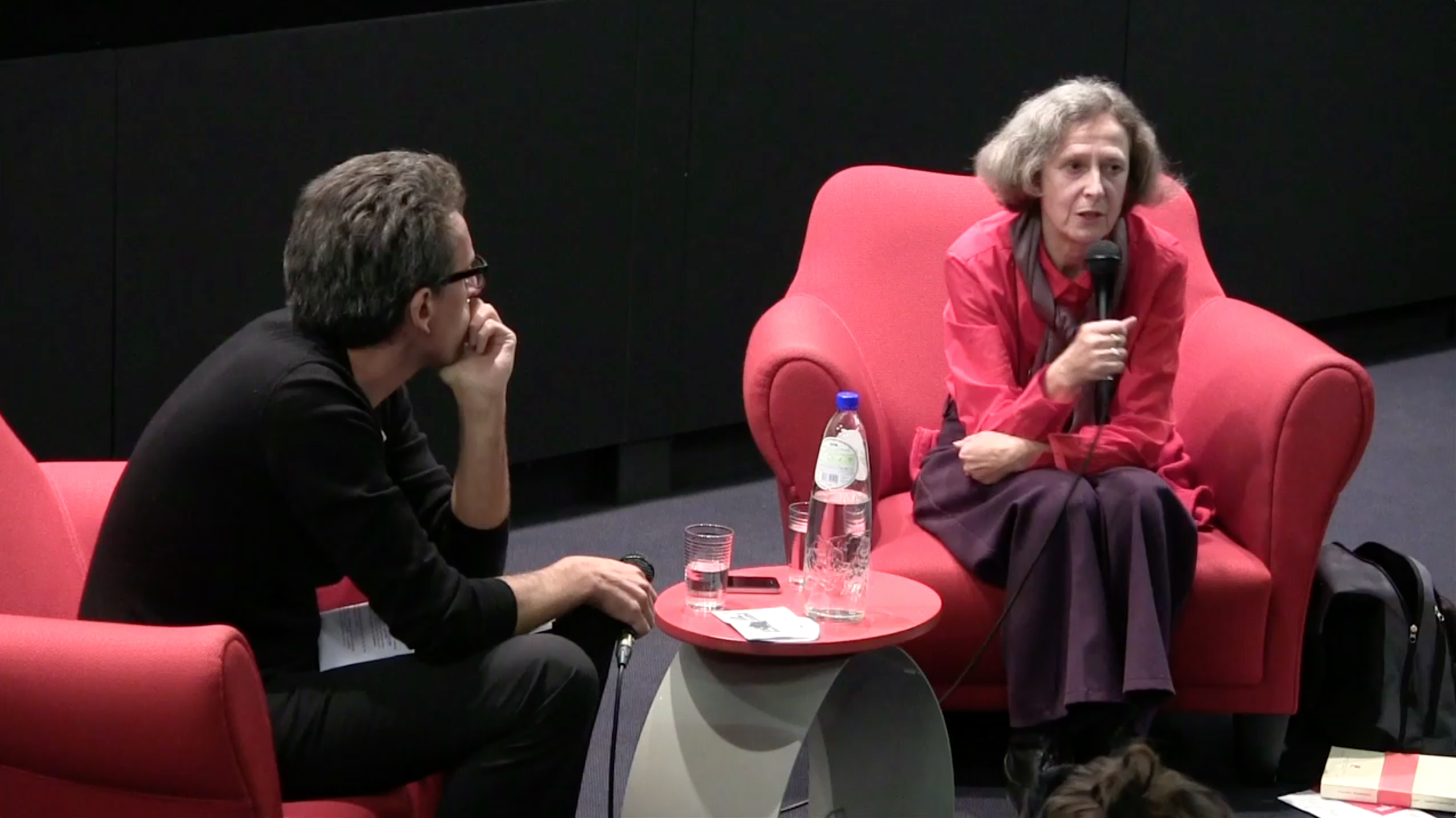
Loredana Bianconi
Cinematek, Brussels, 16 October 2014. Preceded by a screening of Devenir (Loredana Bianconi, 2004).
“Je vais surtout vers les sujets muets – ou réduits au silence – de l’histoire. J’essaye d’écouter sans juger et de comprendre. Je me rends ouverte et disponible à la parole de l’autre pour alerter la mémoire, provoquer des réactions, des réflexions. C’est ma démarche militante.”
– Loredana Bianconi
So many horizons have been closed down, so many dreams are being denied. In this era of consensus, with its effacing of public space and political inventiveness, the end of class struggle might be loudly trumpeted, but the gravediggers are still here, in the grip of austerity and redundancy, in the anonymity and invisibility of suburban sweatshops and overcrowded slums. They are, it is said, those left behind by progression and expansion, those who have been unable to pick the fruits of growth that have been offered by the dominant order, those who are unfortunate enough to be caught up in its crisis and find themselves having to pay for its cure. And the only remedy available, it is said, is an extension of what is on offer, that which has come to feel so natural that we are unable to imagine something different. The realpoliitk of the everyday no longer holds a place for erratic digressions or foolish utopias, which are anyway always, so history has ostensibly taught us, bound to collapse into cruel nightmares. By all appearances, “change” now means “adapt”, just like “revolt” means “consume”. Closed horizons, tilted dreams: this is the emotional landscape that is evoked in Devenir, a landscape alive with memories of hope and belonging that are put to the test of time, and capacities of resolve and commitment that are put to the test of experience. Just like in Do You Remember Revolution (1997, at show 18/10), a portrait of four former members of the Italian Red Brigades, Loredana Bianconi tries to re-engage with questions of rebellion and solidarity, in search of intensities and sensibilities that might still resonate today. How to go beyond the melancholic musings of lost futures and the nihilistic tendencies of our present? In Devenir, the account of a 45 year old woman looking for work tunes in to the state of predicament that is our own, the story of one opens out over the story of many, the intimate gives on to the political. What is proposed is not a sociological treatise nor a political pamphlet, but a sensible world that is reminiscent of all the struggles of everyday living, those countless “small epics” that bloom in the shade of great historical events, but at the same time can never be fully separated from them. And what is incited is not a sentiment of defeat, but rather a call for courage for all those who, like Bertold Brecht’s ‘Pirate Jenny’ whose words close the film, might not know where they are heading, but at least know they can’t stay in place.
[audio:http://http://www.diagonalthoughts.com/wp-content/uploads/2014/11/devenir720_audio_mp4.mp3]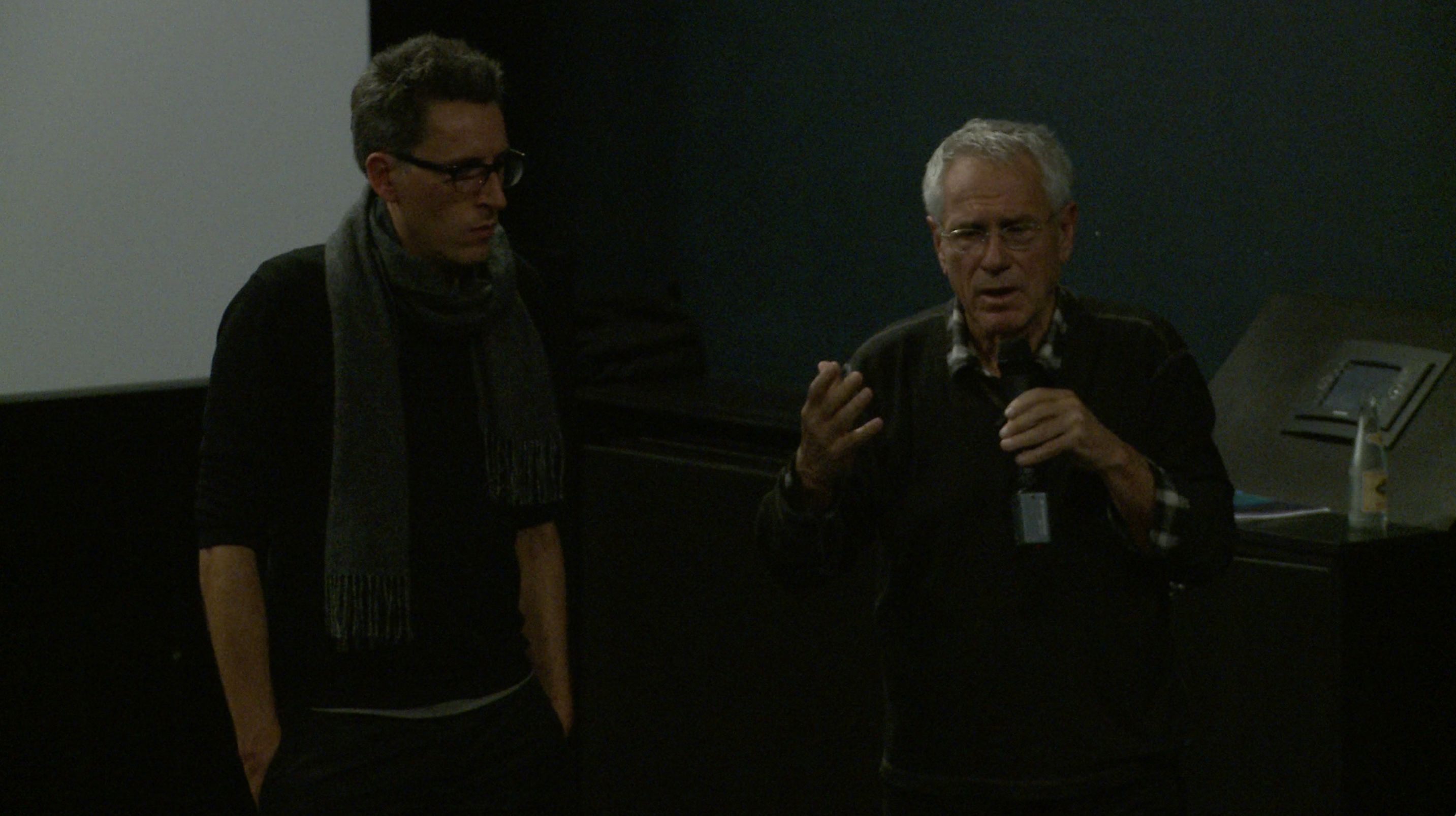
Želimir Žilnik
KASKcinema, Gent, 27 November 2014. Preceded by screenings of Black Film (1971), Seven Hungarian Ballads (1978), Inventory (Inventur – Metzstrasse 11) (1975) and Tito Among the Serbs for the Second Time (1994).
“I do not hide my camera. I do not hide the fact from people I am shooting that I am making a film. On the contrary. I help them to recognise their own situation and to express their position to it as efficiently as they can. The hidden camera is a scam. It is all right to use in films on timid animals, but it has no place in films with people.”
– Želimir Žilnik
Among the many anecdotes for which Želimir Žilnik is well known, there is one involving a discussion he had, sometime in the beginning of the 1970’s, with Ivo Vejvoda, then one of the leading Yugoslav diplomats and communist intellectuals. Vejvoda told Žilnik that it was unfortunate that his films focused so much on the “lumpenproleteriat”, which he called “a regressive force without class consciousness”. This remark was typical for the criticism accusing Žilnik of painting a “black” picture of the Yugoslav society which was ostensibly flourishing in the wake of the political and economic reforms of the 1960’s, an accusation to which he bluntly responded by making a film which he literally titled Black Film (1971). Žilnik picked up six homeless people from the street and brought them into his home, not only to share the warmth of his middleclass apartment, but also to actively participate in making a film about their situation. Black Film stands as the quintessential example of Žilnik’s work, which tends to focus on the lives of vagabonds, swindlers, tinkers, beggars and bohemians, those who were in the Marxist tradition dismissively referred to as the ‘lumpenproletariat’, generally depicted as an inert mass of marginal and reactionary vulgars, an unredeemed and unregenerate underclass which didn’t play any structural role in the construction of socialism. This blackness then, which was so characteristic of the “black wave” cinema of the time, can be associated with the indication of this uneasy contradiction between those who were considered as true proletarians and their degenerate close cousins, all of which were allegedly unable to grasp the political reality of their own situation. It can also be related to the unveiling of the notorious gap between the utopian promise of knowledge and salvation on one hand and the reality of poverty and inequality on the other. But the blackness can just as well be implicated on cinema itself, this art form which used to claim to have the power to change social reality, but in the end has to agree that it can offer nothing but a surface of percepts and affects for us to engage with. “They left us our freedom”, Žilnik wrote in a text accompanying a screening of the film, “we were liberated, but ineffective”. In spite of this self-reflexive critique, Žilnik stubbornly persevered in making films, even up to this day. The political landscape might have changed, but not the filmmaker’s attitude, which remains loyal to the uncovering of the difficult legacy of socialism and the predicaments of those who were once called lumpen, who are today said to be included but hardly belonging.

Eric Baudelaire
Bozar, Brussels, 5 December 2014. Preceded by a screening of Letters to Max (Eric Baudelaire, 2014).
“My work is definitely more on the side of asking questions than affirming possibilities of solutions, but then you can probably push that a little further and say that the act of asking questions can be the premisse of some form of possible decision on a course forward, and that is definitely the place I would consider myself in.”
– Eric Baudelaire
When Eric Baudelaire sent his first letter to Maxim Gvinjia, former Minister of Foreign Affairs of the Republic of Abkhazia, he was sure it would come straight back with a notice saying “destination unknown”. Because Abkhazia does not exist, at least not according to the United Nations and the majority of the world’s governments: it seceded from Georgia during a civil war in 1992-93, but its status remains in limbo, caught in a web of geopolitical interests, ethnic tensions and political unrest. However, the letter did actually arrive, marking the beginning of a long exchange which eventually shaped the fabric of Letters to Max: 74 letters sent over as many days, to which Max responded by recording his comments onto tape. The film became the chronicle of a close friendship, intertwined with the particular history of a stateless state, a place that is both real and imagined. Just like in his previous film works, notably The Anabasis… (2011) and The Ugly One (2013), both made in collaboration with Masao Adachi, filmmaker and former member of the Japanese Red Army movement, Baudelaire’s new film is grounded in a process of interchange and discovery, a process that ineluctably leads to unknown destinations, picking up traces of contested histories and unresolved questions on the way. But in any given space of contestation and invention there is no discovery without a sense of confusion and no interchange without a degree of disagreement. So what forms of cinematic perception and interpretation can be constructed as result of this uncertain hovering between different perspectives and sensibilities? How to find a position between refusal and fraternity? How to define the “point of view” of who or what is inbetween? And what does this enigmatic notion of “point of view” still mean after all, after having done its duty both in the service of Bazinian humanism and of Brechtian verfremdung, after having referred to both the gaze of the filmmaker and the blind spot of ideology, both to the position of the author and what it conceals; what can it possibly mean in today’s cinematic landscape, now that it is permeated with a tendency to either hide behind an adherence to “facts… nothing but the facts” or dwell in a borderless sphere of indefinite ambiguity?

Eyal Weizman
Aleppo, Brussels, 8 December 2014.
“Consider the term “shooting back” that connects the visual field and the field of combat, the camera and the gun. One might say that all these kinds of techniques of extended testimony and mapping should be abandoned because these are techniques born to serve power; but I think we should rather extract them from the mouth of the beast and radicalize them.”
– Eyal Weizman
“Give a voice to the voiceless” is one of the responsibilities that is traditionally associated with political and humanitarian activism: to provide testimony of the concerns and struggles of those who all too often remain silent and invisible, those who are regarded within the global socio-political order as “outside” or “surplus”. Yet the status of testimony has undergone some remarkable shifts in the past decades. First of all, the field of humanitarianism and human rights that served as an independent form of engagement with the pains and sufferings of this world in the 1960’s and the 1970’s, has been gradually pervaded by other kinds of forces and strategies: political-military in the 1990’s, legalistic in the 2000’s. In this context, the role of testimony, whether oral, literal, visual or audiovisual, has been superseded by the use of medical and forensical data, which provide another kind of testimony, one without witness. These entanglements and shifts are all part and parcel of what Eyal Weizman has called our “humanitarian present”, a present characterized by a growing ethical indistinction between fact and law, where all judgement is subsumed to an economy of violence and a systemic logic of “lesser evil”, and all division is replaced by a rationale of negotiation and calculation. In this Dissent ! session we will talk to Eyal Weizman about this contemporary condition in which technologies of humanitarianism and human rights collude with military and political power, with a focus on the role of audiovisual technologies in relation to the paradigm of victimization and the politics of lesser evil, and the status of forensic aesthetics as site of interpretation and contestation.
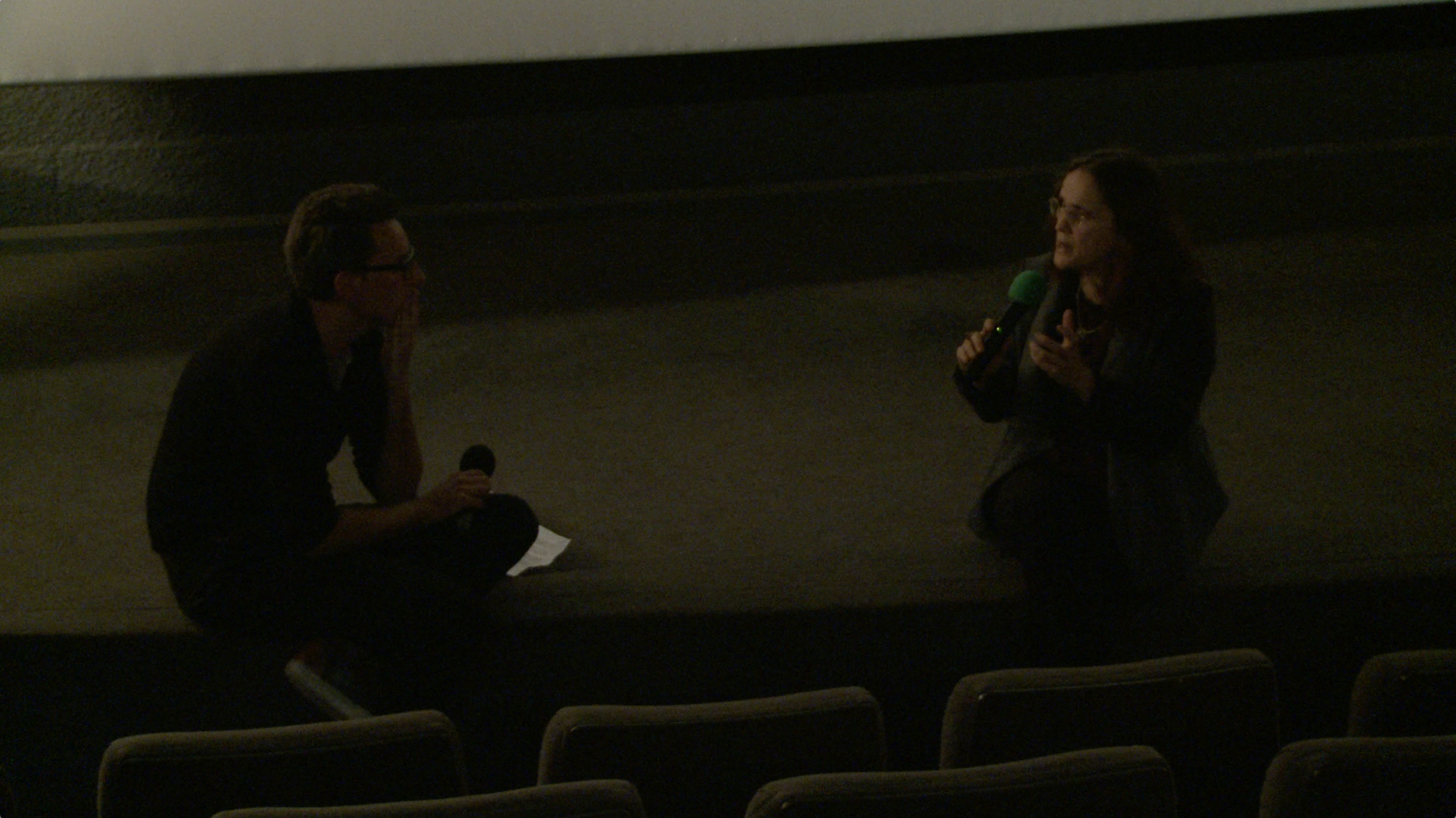
Ariella Azoulay
Galeries, Brussels, 18 December 2014. Preceded by screenings of Khirbat’ Khize (Ram Loevy, 1978) and Al-Midya (Dani Gal, 2014). On 15 December two other films, selected by Ariella Azoulay, were screened at Galeries: Return to Haifa (Kassem Hawal, 1982) and , Ma’loul Celebrates its Destruction (Michel Khleifi, 1984).
“I was born in the early 1960’s, and for years took for granted the existence of the state of Israel. My political consciousness was formed by the 1967 occupation, the injustices it led to and the urgent need to reflect on them. As a young leftist, I was raised to believe that 1948 was a distant disaster, irreversible and less acute than the endless injustices that resulted from the 1967 occupation. Years of research on citizenship and photography made it clear that the occupation was part of the Israeli political regime, and that reconstructing its schema should start in 1948”.
– Ariella Azoulay
Is it possible to break the deadlock of the present and imagine a different future through a revisiting of the past? The theoretical and curatorial work of Ariella Azoulay is grounded in an exploration of this possibility: using the events that occurred between 1947 and 1950 as a prism, she proposes a civil perspective on the history of the Israel-Palestine conflict, one that turns away from the framework imposed by the paradigm of an unavoidable and irreversible national conflict. It is a perspective that encompasses all the inhabitants of the territory, both Jews and Arabs, which allows to reconstruct the collision between them as a product of the war. The violence inflicted on the Palestinians positioned them as the enemy of the very people with whom they had previously shared their lives, which gave way to two distinct narratives – one culminating in the creation of the state of Israel, the other situating the nakba as the constitutive event of Palestinian identity – both of which are oblivious to the origins of this division. In order to reconstruct this past, Azoulay has created an archive of photographs that have been preserved by the same regime that has previously made great efforts to erase its traces, setting limits on what can be seen and what makes sense. But an image is always more and less than itself: it can not be reduced to the intention that has produced it, nor to the meanings that it supposedly reveals or conceals. The work of Azoulay consists of undoing the dominant connection between these images that speak and the discourse that keeps them silent, by making them speak in another way, linking them with eyewitness accounts, diaries, memoirs, minutes and memoranda. In proposing to think in civil terms about a place steeped in hopelessness, she tries to open up a new horizon of civil living for both citizens and those denied citizenship, as inevitable partners in a reality they are invited to imagine anew.
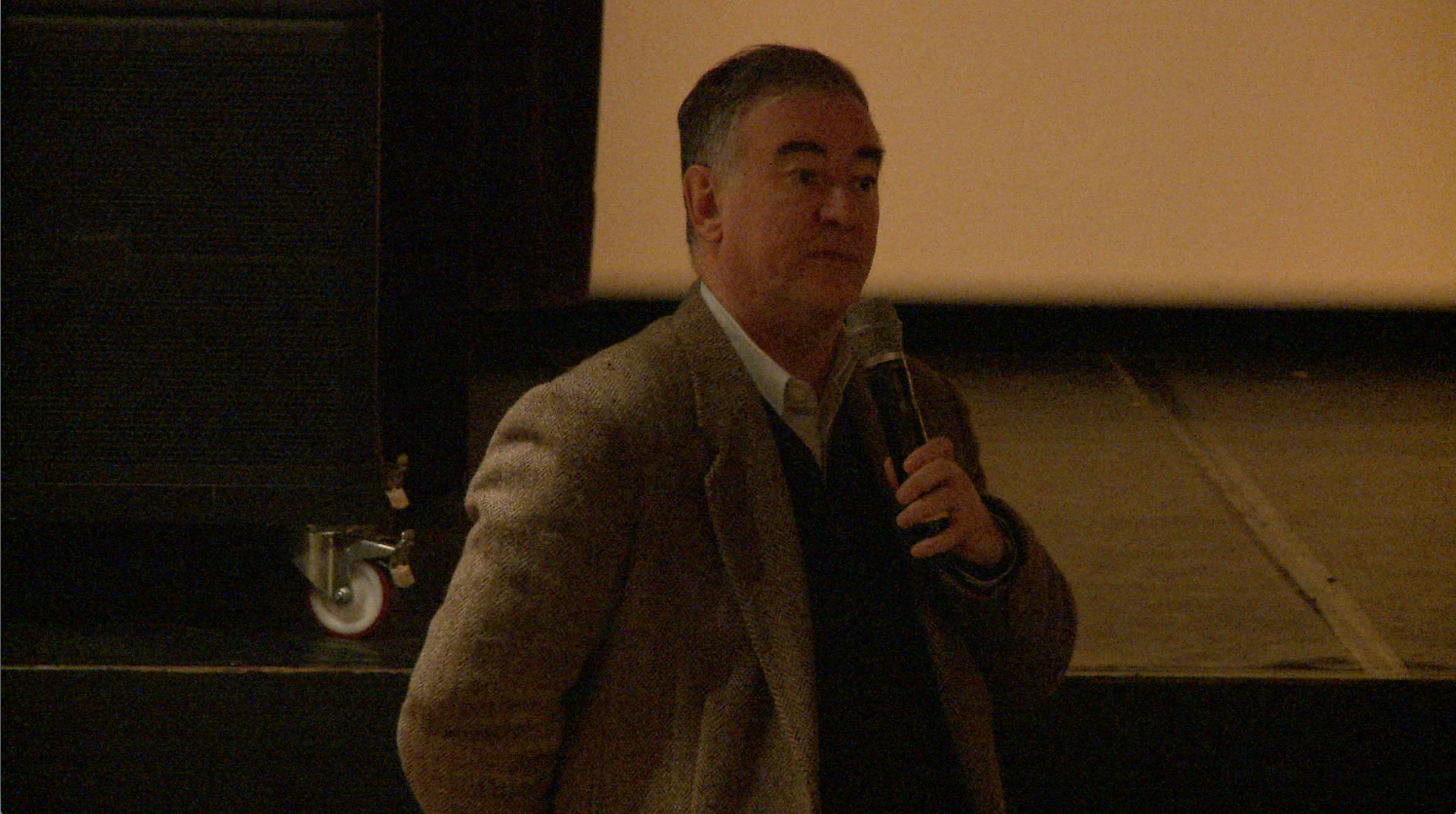
Jean-Pierre Rehm
Bozar, Brussels, 5 February 2015. Accompanied by screenings of No Man’s Land (Salomé Lamas, 2012), Mudanza (Pere Portabella, 2008), Phantoms of Nabua (Apichatpong Weerasethakul, 2009), A Third Version of the Imaginary (Benjamin Tiven, 2012), Bower’s Cave (Lee Lynch & Lee Anne Schmitt, 2008).
“Moi je pense que l’humain a besoin pour naître de faire naître cette chose incompréhensible qu’est l’art, parce que c’est incompréhensible. L’art est la preuve même de l’inhumanité de l’homme, dans un double sens : d’abord, que l’être humain ne s’appartient pas, et aussi la preuve de son côté horrible, terrible. Dans les films qui m’intéressent, je fuis le militantisme hérité des années soixante-dix où on assène des soit disant vérités sans contrepoint. Les films, ce sont des aventures artistiques, l’art n’y est pas une plus value.”
– Jean-Pierre Rehm
Cinema as adventure of time and movement? Cinema as potential encounter with the inhuman within the human, as an experience of the intolerable that can release us from ourselves, allowing us to imagine our world differently? These ideas seem to have some kind of hold on our thinking about the emancipatory potential of cinema, ever since a brilliant thinker proposed to think of art as an exceptional sensorium that allows us to pass over to the other side, there where the truth of being resides, from which one returns with “bloodshot eyes”. But if political emancipation is indeed about exceeding the limits of our vital and social determinations, isn’t there a way of thinking about the potential of cinema without collapsing into metaphysics, without drowning politics and art into one grand ethology in common? If cinema is indeed an art deprived of linguistic palpability or certainty of expression, how can we find words to talk about the operations, figures, resonances, metaphors, attractions and inversions that constitute a cinematic world? And yes, since we seem to have no more patience for the “isms” that prospered so well in the past “short century”, how can we grasp and further the adventures that are happening in front of our eyes? Perhaps these are some of the issues that we can touch upon with Jean-Pierre Rehm, the spirited film enthusiast and, well, enthusiast tout court who has been running, since 2002, one of the most exciting film festivals in Europe, FIDMarseille. For the occasion of this Dissent ! session he has chosen five films, which are on the surface as disparate as the background of its makers. But isn’t the blurring of borders between what is traditionally called “documentary” and “fiction” or what is neurotically categorized as either “art”, “film” or “artists’-film” (sign of the times: the coupling or hyphen) precisely what makes it possible to rekindle cinema’s sensible force of heterogeneity, counter to the consensual tendencies that try to pin everything and everyone down to specific plots and places? As long as we keep up the struggle with easy determinations, then, perhaps we can allow our eyes and ears to drift in unforeseen directions. Who knows, in a time when the real is claimed to be completely disbarred from any form of illusion or utopia, when every divergent standpoint is easily dismissed as “unrealistic”, perhaps cinema, this art of appearance, still might have something to say.
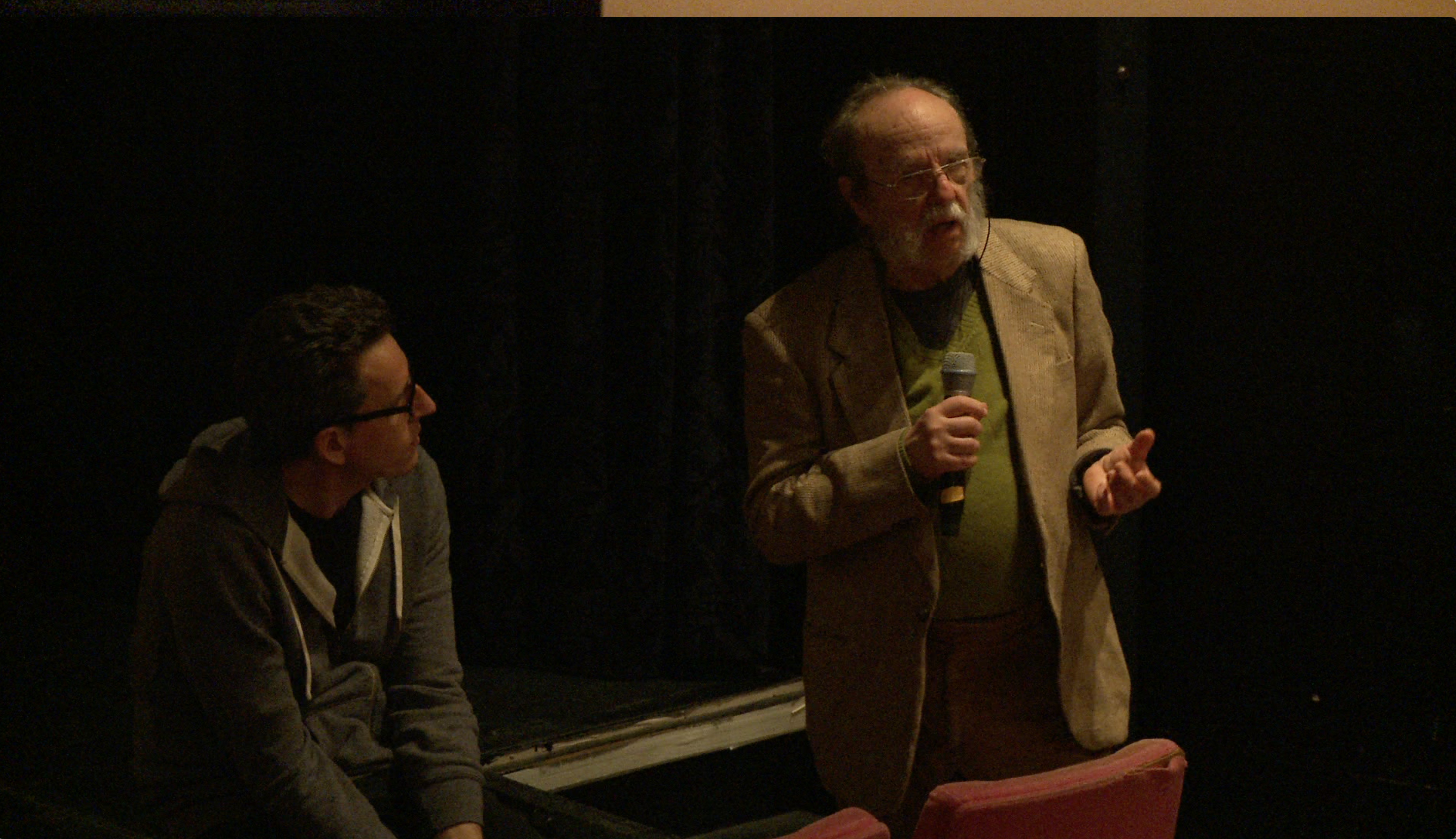
Noël Burch
Bozar, Brussels, 18 February 2015. Preceded by a screening of Red Hollywood (Thom Andersen & Noël Burch, 1996-2013). On 19 February Noël Burch also discussed The Forgotten Space (2010, Allan Sekula & Noël Burch).
“To the mass of filmgoers, after all, what is in focus is, indeed, the diegesis, the illusory “world experience” of film. The work of the signifier, however sophisticated, so long as it keeps a low profile, so long as it does not draw a curtain of semantic noise between that “world beyond the screen” and the “average spectator,” is invariably so out of focus as to be quite invisible.”
– Noël Burch
At a time when corporatists and politicians alike all seem to have a copy of Ayn Rand’s Atlas Shrugged on their nightstand, at a time when her self-styled brand of “radical capitalism” is promoted as a revolutionary and emancipatory force to be reckoned with (after all, aren’t the unreasonably persecuted one-percenters ultimately the symbol of a free society?), it’s pretty daunting to watch her demented testimony before the House Committee on Un-American Activities in 1947. Fulminating against the Hollywood movie Song of Russia – a bland melodrama about a symphony conductor who visits the Soviet Union, falls in love and joins the anti-Nazi resistance – Rand refuses to see the film in relation to the wartime alliance and furiously dismisses it as communist propaganda, because it shows too many Russians “smiling”. This is just one of the many scenes in Thom Andersen & Noël Burch’s Red Hollywood that illustrate the anti-communist hysteria in the throes of Mccarthyism. But who remembers the victims of the Hollywood blacklist, even the notorious “Hollywood Ten” who paid time for their refusal to give in to the coercion? In their film, Andersen and Burch reconstruct this faded period in the history of American cinema and give these screenwriters and filmmakers their due, not by simply confirming their historical status as non-talented martyrs or rejecting the allegations of the witch hunters, but by suggesting how they were actually able to express their ideas in the films they wrote and directed. The film recasts some of the arguments that Thom Andersen already made in his groundbreaking essay ‘Red Hollywood’ from 1985 and that he expanded upon in the book Les communistes de Hollywood. For the making of both the book and the film Andersen found a natural ally in Noël Burch. After all, who else could match the historical knowledge and aesthetical insight of this fellow dissenter? Ever since his Praxis du Cinéma (1969), Burch has explored – both in his writings and films – the cinematic tension between presentation and representation, statement and articulation, showing and telling, a tension that at one time used to be designated as “ideological”. The heyday of ideology critique may be long past by now, but some of its underlying questions keep on lingering today, not in the least in regards to the relation between appearance and reality, form and politics. To paraphrase the beautiful title of one of Burch’s books: how do we give life to those shadows? This Dissent! Session will take the ventures of the “left front” in Red Hollywood as a starting point to address this stubborn conundrum.
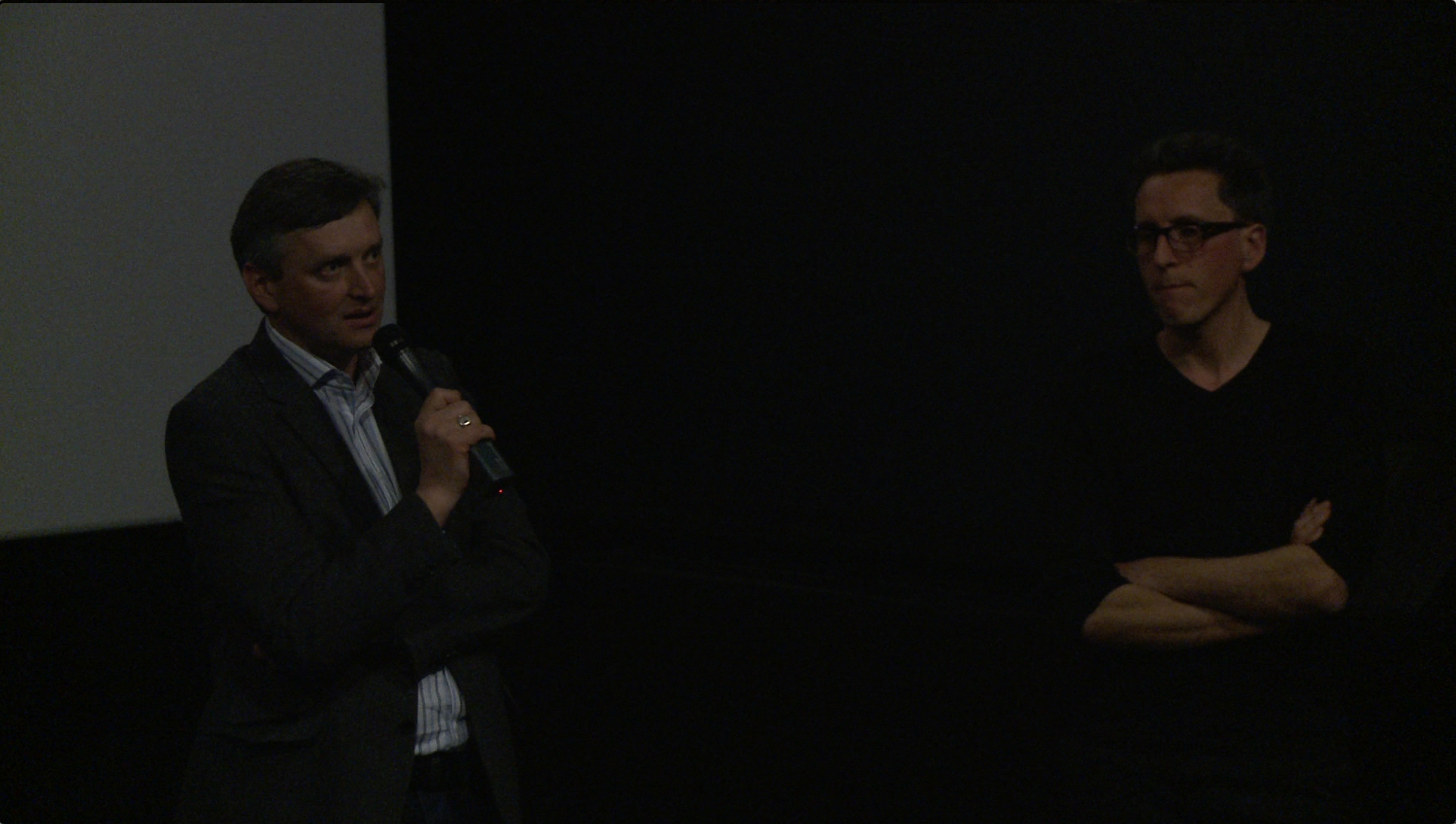
Sergei Loznitsa
KASKcinema, Gent, 12 march 2015. Preceded by a screening of Maidan (Sergei Loznitsa, 2014).
“It is a popular movement, and what I wanted to show, the subject of my film, is the people… That is why I chose a style that enabled me to have many characters, groups, masses of people in the frame at the same time—to observe their actions and movements.”
– Sergei Loznitsa
“Maidan is an enigma to me, which I am yet to solve,” declares Sergei Loznitsa. What does it mean to film an event that surpasses all the ideas and presumptions that the one who films might have? How does one film and keep on filming the making and unmaking of a singular collectivity, itself composed of countless singularities who are caught up in a political process that resists simple identification and illustration? Loznitsa found himself confronted with these questions when he went to Kiev in the middle of December 2013, a few weeks after the wave of demonstrations had begun on Maidan square. He ended up staying for ninety days, as the events unfolded: from the peaceful rallies demanding closer European integration, to the bloody street battles between the protestors and riot police. But in contrast to the tendency of many “militant” filmmakers to position themselves in the heart of the struggle and capture its flow and flux by way of hand-held camera work, vivid testimonies and dynamic editing, Loznitsa presents the mounting unrest in a series of statically framed long takes, without interviews or commentaries. Rather than focusing on individual stories – as in, for example, Jehane Noujaim and Karim Amer’s depiction of the uprisings on Tahrir Square – he seems to be more interested in the collective aspect of the so-called “Euromaidan” protests, chronicling the sheer mechanics of human mass movement. What does this choice entail exactly? How are we to relate to these images of nameless bodies and sounds of bodiless voices? Which kind of relation between the small and the large, the singular and the collective does it propose to us? And how does it relate to the dominant notions of populism that we have inherited from some of those who deplored the rise of the revolutionary movements that put an end to the reign of kings and nobles?
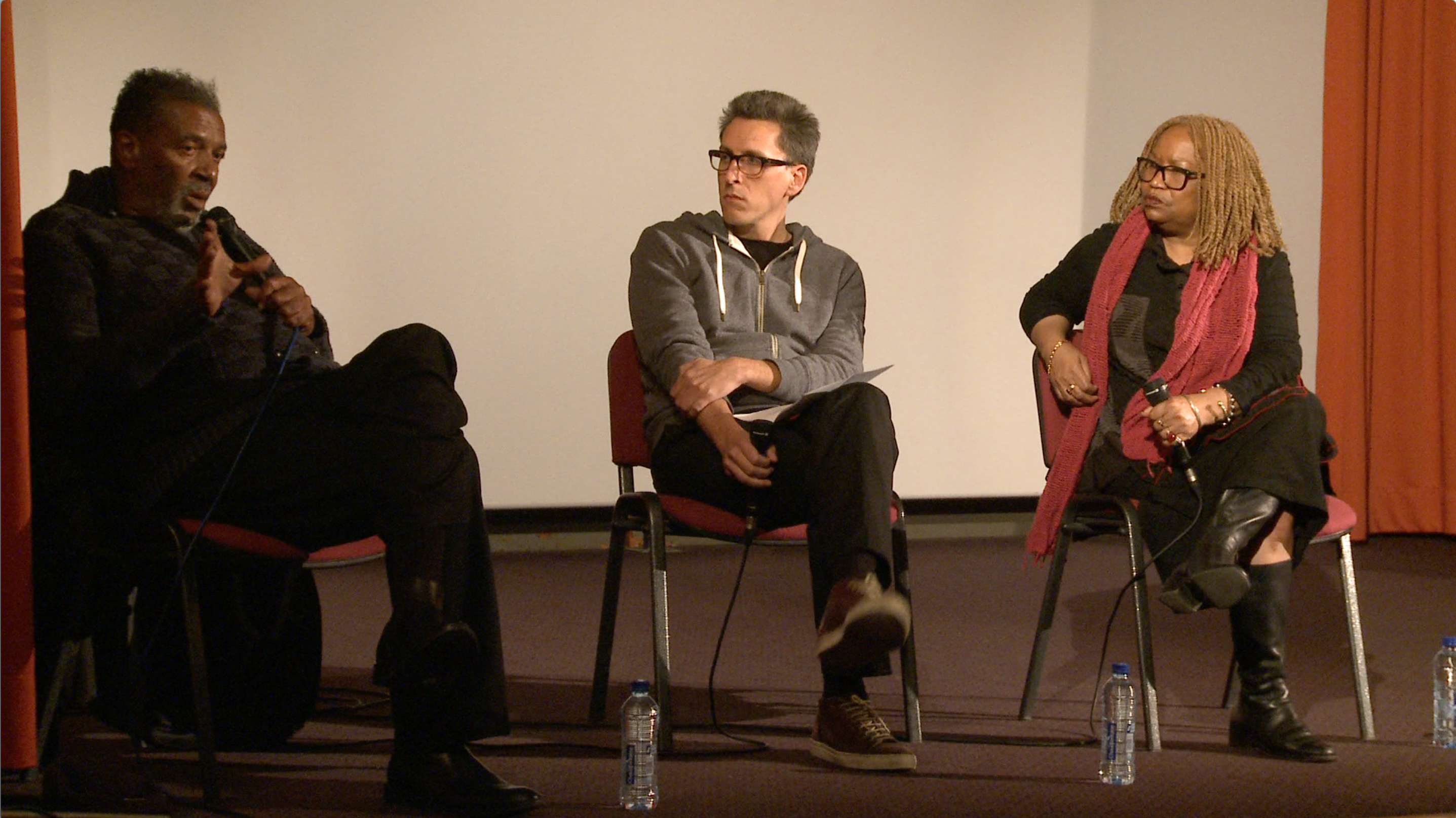
Billy Woodberry & Barbara McCullough
Paddenhoek, Gent, 2 April 2015. In the context of the LA Rebellion program (Courtisane Festival, 1-5 April 2015).
“The black experience, in some ways, is particular, but in that it is also universal… Our concern was to speak about these people and their relationship to the world. Their problems are in many ways the defining ones—the massive unemployment, the difficulty of male-female relationships—which seem to be universal—the maintenance of the family. These are big problems. But they aren’t unique to black people.”
– Billy Woodberry
Billy Woodberry is one of the leading directors of the so-called “L.A. Rebellion” movement, a critical mass of filmmakers of African origin or descent – most of whom studied at the UCLA in Los Angeles in the late-1960s to the late-1980s – who committed themselves to depict the everyday lives of Black communities in the U.S. and worldwide. In his feature debut, Bless Their Little Hearts, Billy Woodberry boldly embraced the spirit and challenge of this movement to forge an independent mode of filmmaking in the shadow of the Hollywood studios. Filmed on location in South Central Los Angeles, Woodberry’s film gently reveals an America overlooked and all too rarely seen on screen, a wholly authentic vision of the black experience that makes clear the stubborn rigidity of racial and class hierarchies in the United States. What does it mean to represent and consider “black experience” in cinema? How can one wage war on the prevailing raciological orthodoxy in cinema, while at the same time escaping the burden of representation that tends to befall films that grapple with the lives of the discriminated and marginalized? How does one challenge, disrupt and redirect dominant renderings of blackness without falling into the trap of essentialism? How does one tell a story and find a form that is consistent with the fate and destiny of black people as a group, engaged in a protracted struggle for social equality? And how does one prolong that struggle, in cinema as elsewhere? In this session, we will talk with Bill Woodberry about how these challenges have been addressed in his own work, and in the L.A. Rebellion movement.

Pedro Costa & Thom Andersen
Sphinx, Gent, 3 April 2015. Preceded by a screening Où gît votre sourire enfoui? (Pedro Costa, 2001). In conjunction with the “Artist in Focus” programs around the work of Pedro Costa and Thom Andersen ((Courtisane Festival 2015).
“Oddly, the older I get, the more optimistic I become about the possibilities of film, cinema, movies, whatever you want to call it, as a medium. I think for the way it brings together so many different arts, because of the fact that there is a kind of existential bond between the representation and the thing being represented, because of the way that it can take us to different places, give us an insight into lives that are very different from our own, show us things that we can never possibly see, describe an aspect of reality that hasn’t been acknowledged.”
– Thom Andersen
“Cinema is not about the artist. It’s about being in the world, our world, choosing a place and figuring out elements of time and space and limits that are common to all of us. I believe that, if cinema goes beyond its realistic borders, it loses all of its powers.”
– Pedro Costa
Pedro Costa and Thom Andersen: two filmmakers who, to all appearances, seem to have very little in common. One is mainly celebrated for his portrayals of the inhabitants of Fontainhas, a quarter on the margins of Lisbon, the other is most well known for his investigations into the history of cinematic representations, in particular those of Los Angeles. But for those who prefer to embrace cinema as a “supplementary country”, as Serge Daney was so keen to say, the geographical or categorical borders that tend to divide it are doomed to be nothing but nuisances and hindrances. If there really is an imaginary country called cinema, it might be because it has true inhabitants who all speak the same “language”, no matter how far apart they may find themselves from one another. This shared language, in all its impurity and hybridity, is precisely grounded in the one sentiment that seems to be lacking these days: trust. A trust in cinema’s capacity to describe the world, in all its terrifying splendor and intolerable horror, in all its vulnerability and resilience. But how does one hold on to this trust, in defiance of the waves of cynicism and defeatism that persistently threaten to erode it? Perhaps that is what Thom Andersen means with “Cinema Against the Grain” – which is the name he has given to one of his classes. What does it mean to think of cinema as an oppositional force? What or whom does cinema need to resist or stand against? And what exactly does this resistance imply? Does it entail stubbornness by remaining in place or the confidence to push ahead? In the latter case, one cannot fail to ask: Where to? Is it not when the answer to this question remains unclear that one is confronted with what is perhaps the most critical question of all: For whom? And perhaps more importantly: With whom? These and other questions will be at stake during this talk, which will be preceded by a screening of Pedro Costa’s magnificent portrait of two filmmakers whose work is undoubtedly one the most powerful manifestations of “Cinema Against the Grain”: Jean-Marie Straub and Danièle Huillet.
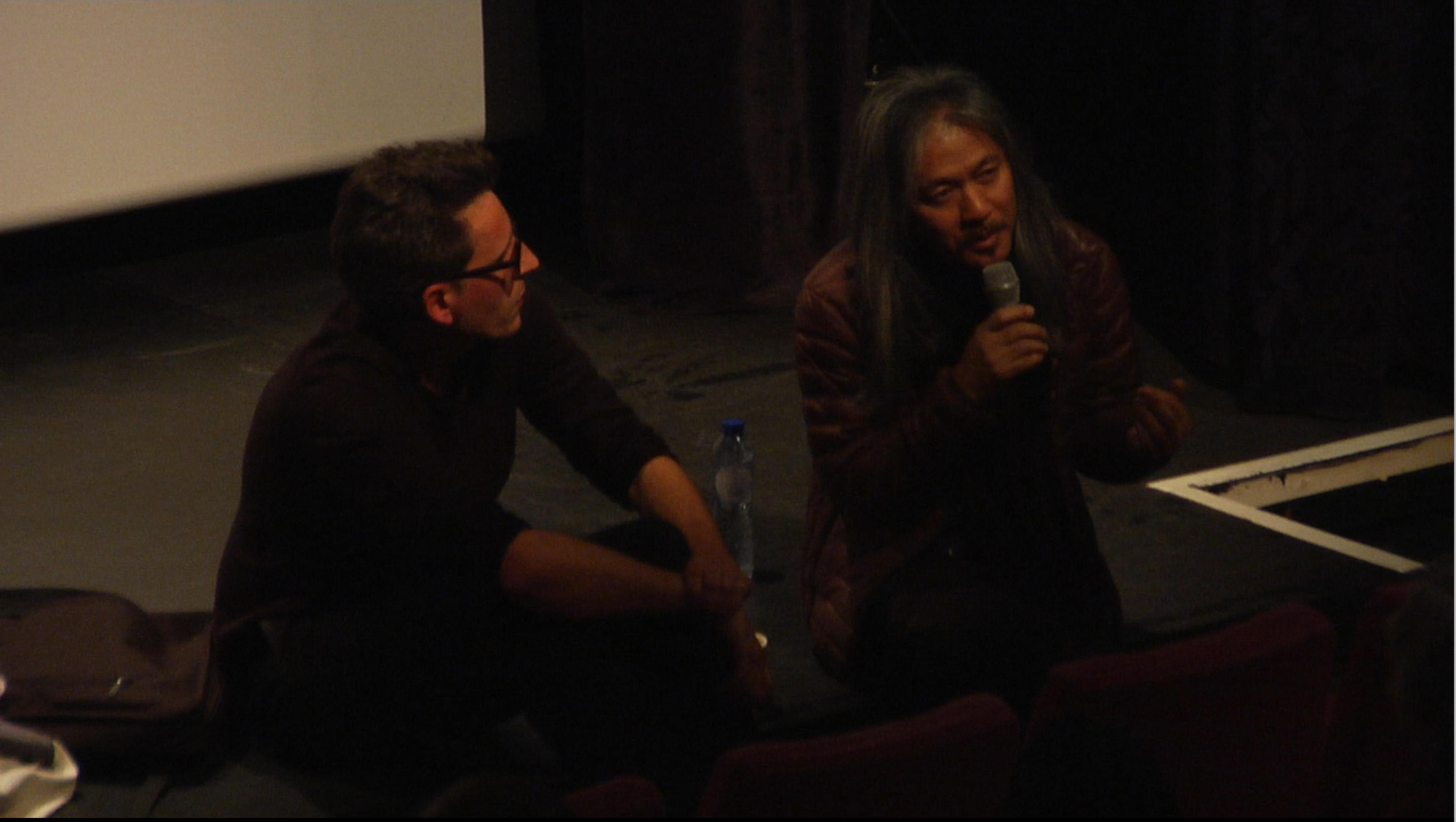
Lav Diaz
Bozar, Brussels, 11 November 2015. Preceded by a screening of Norte, hangganan ng kasaysayan (Norte, the End of History) (Lav Diaz, 2013). In the context of a retrospective program on the work of Lav Diaz (Cinematek, October – November 2015).
“The endless search for redemption is man’s gift and curse–because man can’t be relegated to the generic, to being a genre, to being just a dreaded cliché; because man comprehends the need for change, for progress; because man comprehends the perils of retrogression and relapse. And so, he struggles for the ideal. Struggling for the ideal means man will perpetually suffer, and thus, the vision of redemption becoming perpetually inherent to liberate him from that suffering. Hence, his concept of humanity is redemption. And his concept of redemption is great humanism. The thesis of my cinema gravitates to this discourse. Art is part of that struggle. I am trying to be part of the struggle.”
– Lav Diaz
How to come to terms with the history of a country that is haunted by memories of colonization, rebellion and oppression, a country that continues to wrestle with itself in search for meaning and identity? The weight of this question makes itself felt in every frame, in every face, breath and gesture inhabiting the films of Lav Diaz. From his feature debut, Serafin Geronimo: Criminal of Barrio Concepcion (1998), to his latest From What Is Before (2014), all of his films are deeply rooted in the history and politics of his home country, the Philippines. They bear the wounds of a troubled past that have never been able to heal, as the shadows cast by the Spanish and American colonization, the conflict between Moro Muslims and Christians, and Ferdinand Marcos’ imposition of Martial Law still loom heavily over the country. Even though the dictatorship has come to an end almost thirty years ago, the harms and injuries produced by the past have never seemed to wither away, but have grown ever more inward. This legacy of trauma and disempowerment, of “stifled hands and silenced voices,” as Alexis Tioseco wrote, is what can be felt reverberating in Lav Diaz’ shattering tragedies of sin, guilt and redemption.
It seems unlikely to be a coincidence that 19th century Russian literature, especially the work of Dostoevsky and Tolstoy, has never been far from his mind. Already in Serafin Geronimo, which starts out with a quote from Crime and Punishment, Diaz seems to have established his main theme: the search for redemption, a theme which continues to run through his oeuvre, from the Tolstoy-inspired Death in the Land of Encantos (2007), in which a onetime political prisoner confronts his former interrogator, to Norte, the End of History (2013), which begins with a Raskolnikov-like figure committing murder, but develops into an allegory about Marcos. And just as the Russian novelists sought to depict “the Russian soul” by making full use of the temporal spaciousness of their prose epics, Diaz’ portrayals of the lives and suffering of the Filipino people unfold over epic lengths of time, stretching over multiple hours. This duration gives Diaz a grand canvas on which he patiently sketches painstaking diagrams of the factors and events that shape the multiple, interconnected lives of the people he observes, unfurling into panoramic meditations on morality, violence and death, torn between humanist faith and materialist despair.
Cinema as window onto the troubled soul of the world, as a quest for the inner life of reality in all its mystery and ambiguity: in Lav Diaz’ work yesteryear’s dream of André Bazin appears to have found a contemporary follower, a filmmaker who is not about to tone down his search any time soon. As he himself has said, “I would go to any extent in my art to fathom the mystery of humankind’s existence. I want to understand death. I want to understand solitude. I want to understand struggle. I want to understand the philosophy of a growing flower in the middle of a swamp.”
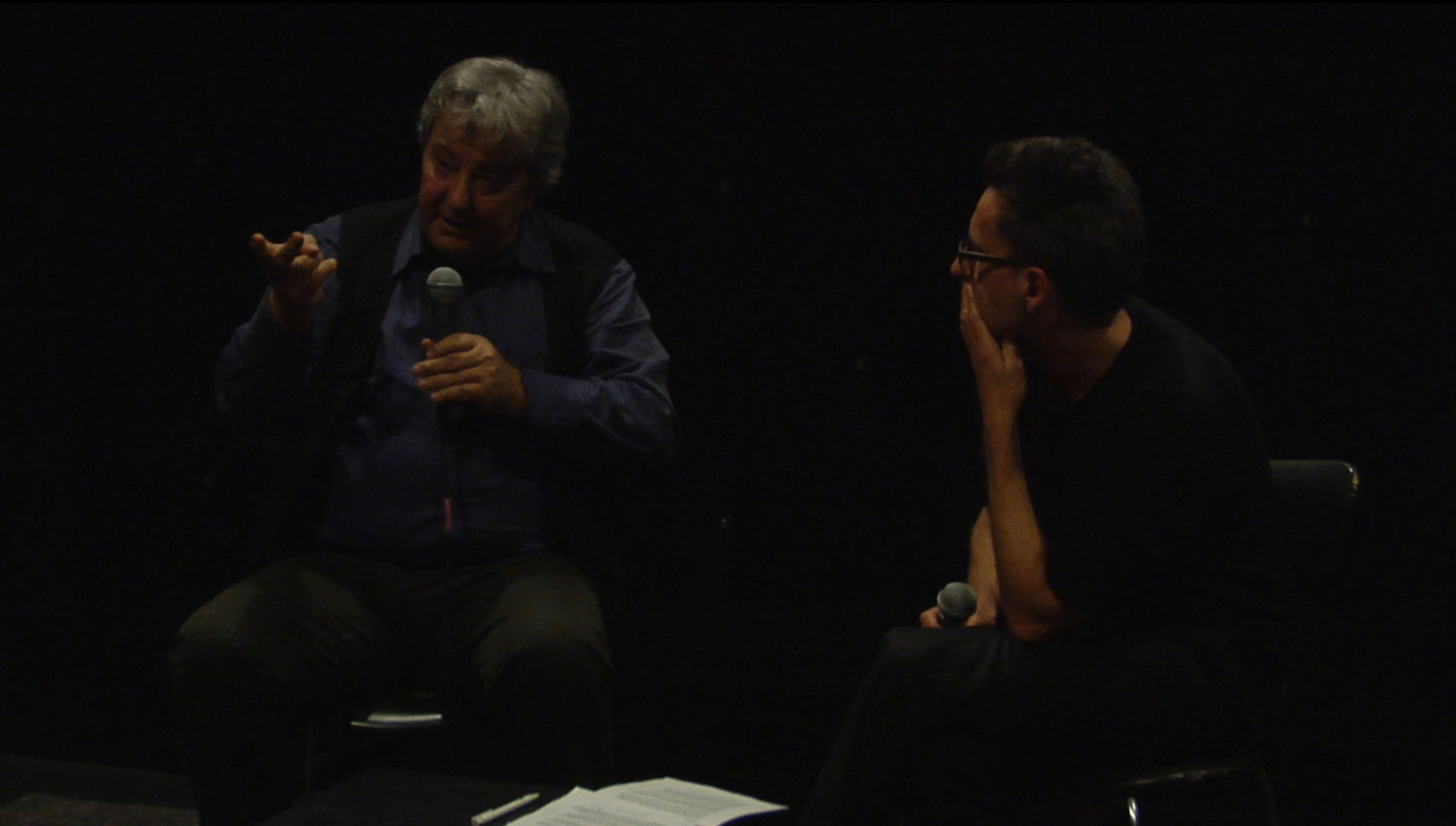
Michel Khleifi
STUK / Cinema Zed, Leuven, 9 December 2015. Preceded by a screening of Fertile Memory (Michel Khleifi, 1980).
“Somehow, Khleifi has managed in his film to record Farah’s first visit to her land. We see her step tentatively onto a field; then she turns around slowly with arms outstretched. A look of puzzled serenity comes over her face. There is a little hint on it of pride in ownership. The film unobtrusively registers the fact that she is there on her land, which is also there; as for the circumstances intervening between these two facts, we remember the useless title deed and Israeli possession, neither of which is actually visible. Immediately then we realize that what we see on the screen, or in any picture representing the solidity of Palestinians in the interior, is only that, a utopian image making possible a connection between Palestinian individuals and Palestinian land.”
– Edward Said
It’s been thirty years since Edward Said wrote this passage, as part of a reflection on the Palestinians’ experience of dispossession and exile. For Said, Michel Khleifi’s Fertile Memory managed to call up, with astonishing precision and beauty, the painful memory of his mother and all those who had their identity taken from them by Israeli colonialism. In seeing the moment when Farah Hatoum sets foot on her land after having stubbornly refused to accept attempts by settlers to legalize its expropriation by buying it, Said was reminded of how separated he was of the experience of an interior that he could himself not inhabit. “At once inside and outside our world”: that is how he described the exile experience, one that Michel Khleifi himself is not unfamiliar with. In September 1970, the month that became known as “Black September,” he left the city of Nazareth in Galilee and settled in Brussels, where he commenced theater and television studies. It was only a decade later that he returned to his place of birth to shoot his first documentary film, which became Fertile Memory. It tells the tale of two women, one of whom, Farah, is Khleifi’s maternal aunt, a widow in her fifties who was compelled to work in an Israeli textile factory after her land was seized. The other is Sahar Khalife, a novelist whom Khleifi had gotten to know through her writing, in which she examines the struggle of Palestinian women. The intimate portrait of both women reveals the traces of a double occupation in their lives: not only do they suffer from the Israeli domination but also from the restrictions imposed on them by the patriarchal society. By focusing on the land as a symbol of Palestinian identity and taking in account internal contradictions in the fight for emancipation, Khleifi’s film marked an important shift in the history of Palestinian cinema. Rather than offering an image of unity and homogeneity, Khleifi and other filmmakers who would follow in his footsteps endeavored to re-envision Palestine as a heteroglossic multiplicity of trajectories and temporalities. The experience of dispossession is captured in its lived complexity, showing both resilience and diversity under occupation.
Much time has passed and many things have changed in the dynamics of dispossession since Michel Khleifi made Fertile Memory. The film was finished right before the first Lebanon war broke out, several years before the beginning of the first Intifada and more than a decade before the Oslo Accords. It was made more than two decades before the Israeli Security Fence began to scar the landscape and a UN Committee would conclude that Israel is engaging in apartheid practices, in violation of countless international laws. Today, violence is once again on the rise and a solution seems to be further away than ever before. Meanwhile, the land of Palestine is increasingly being severed and fragmented, further eroding claims of Palestinian ownership. As the continuity of their land gradually disappears from the life of Palestinians and the dominant narratives claiming the unavoidability and irreversibility of the Israeli-Palestinian conflict gain evermore traction, more and more activists insist that any move towards possible futures must begin with memory. In a time when all possibilities seem to be suffocated in the stranglehold of an unforgiving “realism”, could those “utopian images” that Edward Said discerned in the work of Michel Khleifi still be of use as prisms to imagine the impossible?

Sylvain George
STUK / Cinema Zed, Leuven, 9 March 2016. Preceded by a screening of Qu’ils reposent en révolte (des figures de guerre) (Sylvain George, 2010). Discussion led by Jacques Lemière.
“Cinema not only bares witness to the struggle of migrants, it also offers the sensible world that responds to it: a world where there are not only makeshift tents, cold, hunger and grids, but also their transmutation in always changing spectacles, in movements and shimmering, in shadows and reflections. This is the most profound politics of Sylvain George’s films: not only in showing the capacity of the ‘wretched of the earth’ to live and think in accordance with the violence they are subjected to, but also in making them antecedently inhabit this world that is refused to them, the world where everyone has access to everything, including the superfluent and the artificial.”
– Jacques Rancière
Thousands of women, men and children, worn out after a long and terrible voyage, left to their own devices in what is considered as the largest slum of Europe, where they survive in inhumane and insanitary conditions. Without basic hygienic facilities, they face the constant threat of epidemics and infectious diseases. While local authorities increasingly impose restrictions on the work of health organizations and aid agencies, clashes with police forces and right-wing militants are deteriorating into a spiral of violence. To this dreadful situation, the state governement responds with more repression in the name of “security”. These are the facts that we all know about the “jungle” of Calais, as well as the more recent migrant camps in Dunkerque and elsewhere in the North of France and Belgium. For over eight years now Sylvain George has committed himself to give visibility to the living conditions of those suffering this injustice. Qu’ils reposent en révolte, the first feature film that resulted from this commitment, is composed of fragments that were filmed in Calais between Juli 2007 and November 2010. The film however does not merely offer an illustration of a utterly scandalous situation. The migrants depicted in the film do not correspond to the figures of victims silenced by oppression or of fighters crying for their rights. Instead of showing the clash of one violence against another, the film rather depicts how individuals rise their bearings and thoughts to meet the state violence inflicted on them. Instead of depicting them as eternal victims or “bare lives”, it shows their capacity to state their own history and take charge of their destiny. “Politically speaking, it is about standing up”, says Sylvain George, “about contesting these grey zones, these spaces or cracks like Calais situated somewhere between the exception and the rule, beyond the scope of law, where law is suspended, where individuals are deprived, stripped off their most fundamental rights. And that while creating, through some dialectic reversal, the ‘true’ exceptional states. Space-time continuums where beings and things are fully restored to what they were, are, will be, could be or could have been”.
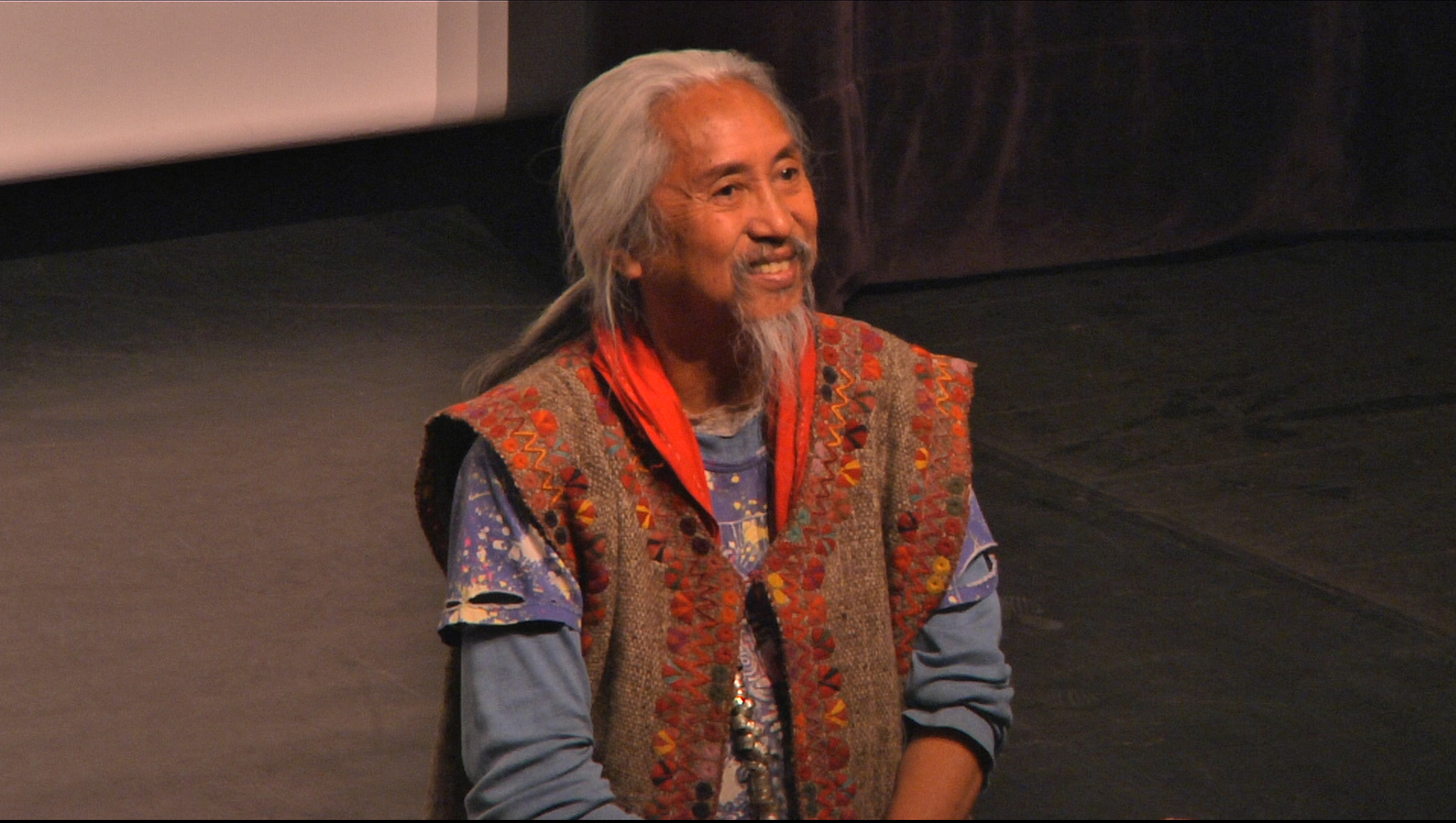
Kidlat Tahimik
Bozar Cinema, Brussels, 20 March 2016. Preceded by a screening of Mababangong Bangungot (Perfumed Nightmare) (Kidlat Tahimik, 1977) and followed by a screening of Sinong Lumikha ng Yoyo? Sinong Lumikha ng Moon Buggy? (Who Invented the Yo-Yo? Who Invented the Moon Buggy?) (Kidlat Tahimik, 1979).
“A cultural politics, a politics of daily life, which emerged in earlier decades but as something of an adjunct and a poor relative, a supplement, to ‘politics’ itself, must now be the primary space of struggle. This is indeed precisely what Kidlat’s film teaches us: that the other levels must be inscribed – from the sheerly eventful or punctual to the great class warfare of the national liberation struggle – but that today as never before we must focus on a reification and a commodification that have become so universalized as to seem well-nigh natural and organic entities and forms.”
– Fredric Jameson
Werner Herzog counted the film amongst the most original and poetic works of cinema made anywhere in the 1970’s. It reminded Susan Sontag that “invention, insolence, enchantment – even innocence – are still available on film”. And Fredric Jameson hailed it as a model example of how cinema could invent new geotopical cartographies within the landscape of late capitalism. But for all these words of praise, Perfumed Nightmare, Kidlat Tahimik’s first feature film, has overall remained a hushed secret within the dominant historiographies of cinema. If it is mentioned at all, the film tends to be associated with “Third Cinema”, a catch-all term that once embodied the hope for a new kind of cinema that could challenge the hegemony of the dream factories of Hollywood and Mosfilm, a hope that coincided with a political aspiration that was called “Third-Worldism”. Today, the idea of a “third” world or cinema seems to have become nothing less than an embarrassment in view of a time of globalization whose economic reality has, or so it appears, supplanted all possibilities of alternate ways of life or alternate modes of production. Perhaps this explains why a Marxist critic like Jameson is fascinated with the work of Kidlat Tahimik, which succeeds in remapping the new into the old and the old into the new, rather than aiming to simply replace or destroy old paradigms. In Perfumed Nightmare (1977) Tahimik plays a jitney driver in a Philippine village who dreams of becoming an astronaut or at the very least to strike it rich in the land of dreams which is the United States. He makes it as far as Europe, where a series of rude and comical awakenings unfolds and Kidlat learns that the modern Western world is far from paradise. In the follow-up film, the self-proclaimed “third-world space spectacle” Who Invented the Yo-Yo? Who Invented the Moon Buggy? (1979), our hero finds himself as a guest worker in the Germanic lands of “Yodelburg,” where he dreams of organizing the Philippines Official Moon Project. After all, even the global juggernaut of the American space program can’t get to the moon without Philippine innovations: the yo-yo, the early cousin of the gyroscope, which was placed on spaceships to the moon, was invented by Philippine tribesmen, while a Filipino living in the U.S. created the moon buggy. Both films, as Sontag pointed out, “makes one forget months of dreary moviegoing”. Like the festooned “jeepny” that Tahimik’s character constructs from an abandoned U.S. Army vehicle, they create something wholly original and imaginative from the discards of colonialism, like a pair of omnibuses hovering back and forth between different worlds with generous hilarity.
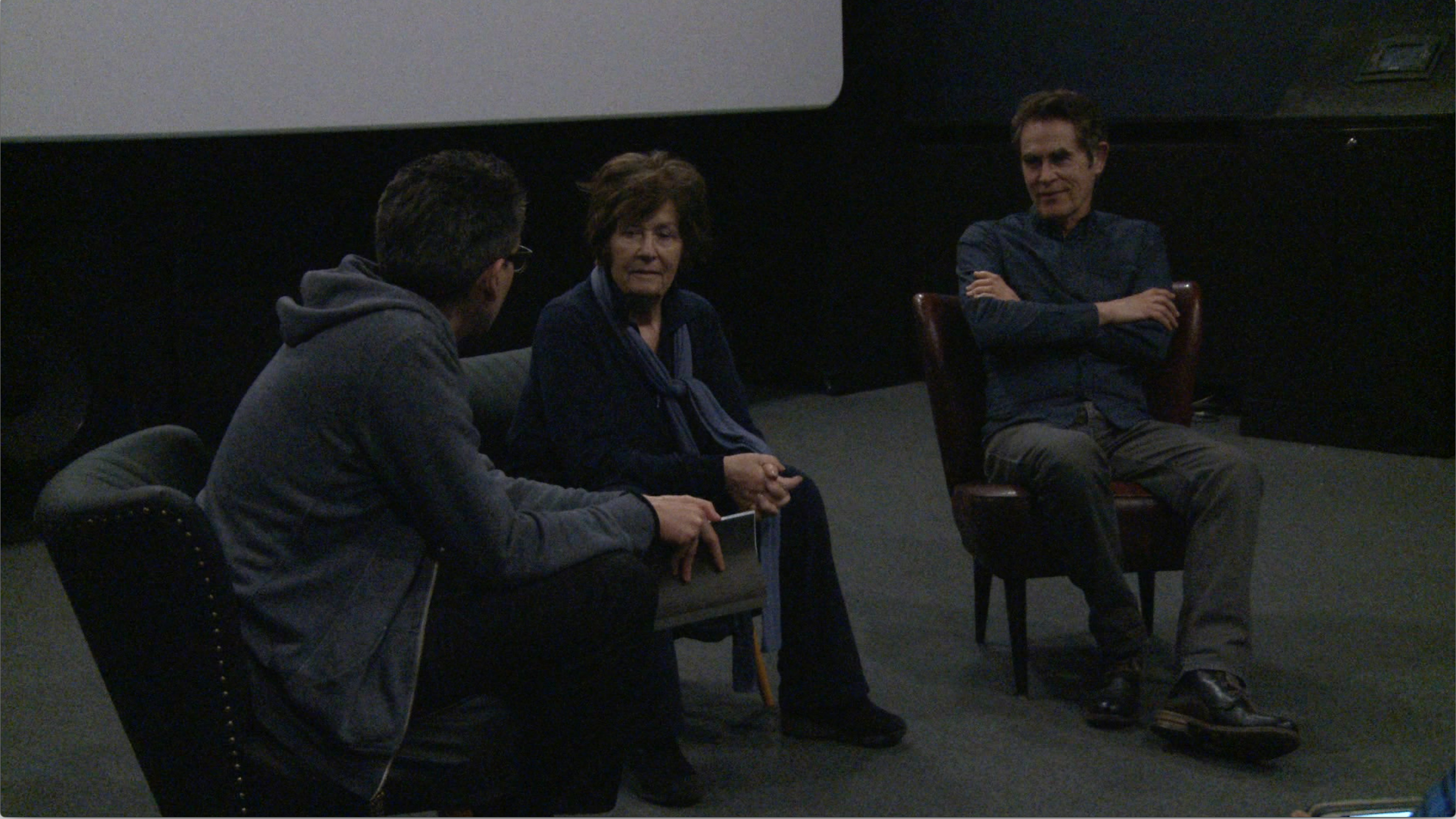
Ann Guedes & Steve Sprung
KASKcinema, Gent, 25 March 2016. In the context of the In Between Times program (Courtisane Festival 2016, 23-27 March).
“I believe people accept there is no real alternative.” Thus spoke the Iron Lady. After the freezing Winter of Discontent came the long-awaited ‘winter of common sense’. An era is drawing to a close, she claimed, meaning that the time for foolish dreams and misguided actions was over. There were to be no more diversions from the one and only course worth pursuing: that leading to the triumph of global capitalism and liberal democracy. While those in power started to pursue vigorous reform programs of neoliberal economic policy and regressive social agendas, some of those who lost their bearings blamed the ‘bloody-minded’ commoners for having invited the ravages brought upon the dreams of another future. As the memories of struggle faded, counter-forces retreated to a defensive position, where they could merely see fit to protect the freedoms and entitlements that had been acquired with so much grit.
“Wanting to believe has taken over from believing,” a filmmaker observed. But the uncertainty did not stop filmmakers from making films, just as it didn’t stop movements from occupying the spaces that the traditional counter-forces had excluded and abandoned. Instead of holding on to the plots of historical necessity and the lures of an imagined unity, they chose to explore twilight worlds between multiple temporalities and realms of experience, situated in the wrinkles that join and disjoin past futures and future presents, memories of struggle and struggles for memory.
This program presents a selection of British films that have documented and reflected on the changing political landscape in a period that stretched from the mid-1970s to the beginning of the 1990s. At its core is the work of a filmmaker who was pivotal within Britain’s independent film community: Marc Karlin (1943-1999). He was a member of Cinema Action, one of the founders of the Berwick Street Film Collective, director of Lusia Films, and a creative force behind the group that published the film magazine Vertigo. Described by some as ‘Britain’s Chris Marker’(with whom he was befriended), he filmed his way through three decades of sea change, wrestling with the challenges of Thatcherism, the demise of industrial manufacturing, the diffusion of media and memory, the crisis of the Left and the extinguishing of revolutionary hopes.
The work by Marc Karlin and the other filmmakers in this program allows us to feel the pulse of an era of transition, whose challenges and transformations are still with us today. At the same time that the Iron Lady is being immortalized as ‘a force of nature’, while the arguments for the austerity policies that she championed are crumbling before our eyes, a time when the present is declared to be the only possible horizon, it may be worth our while to revisit this era, if only to discover that history is not past – only its telling.
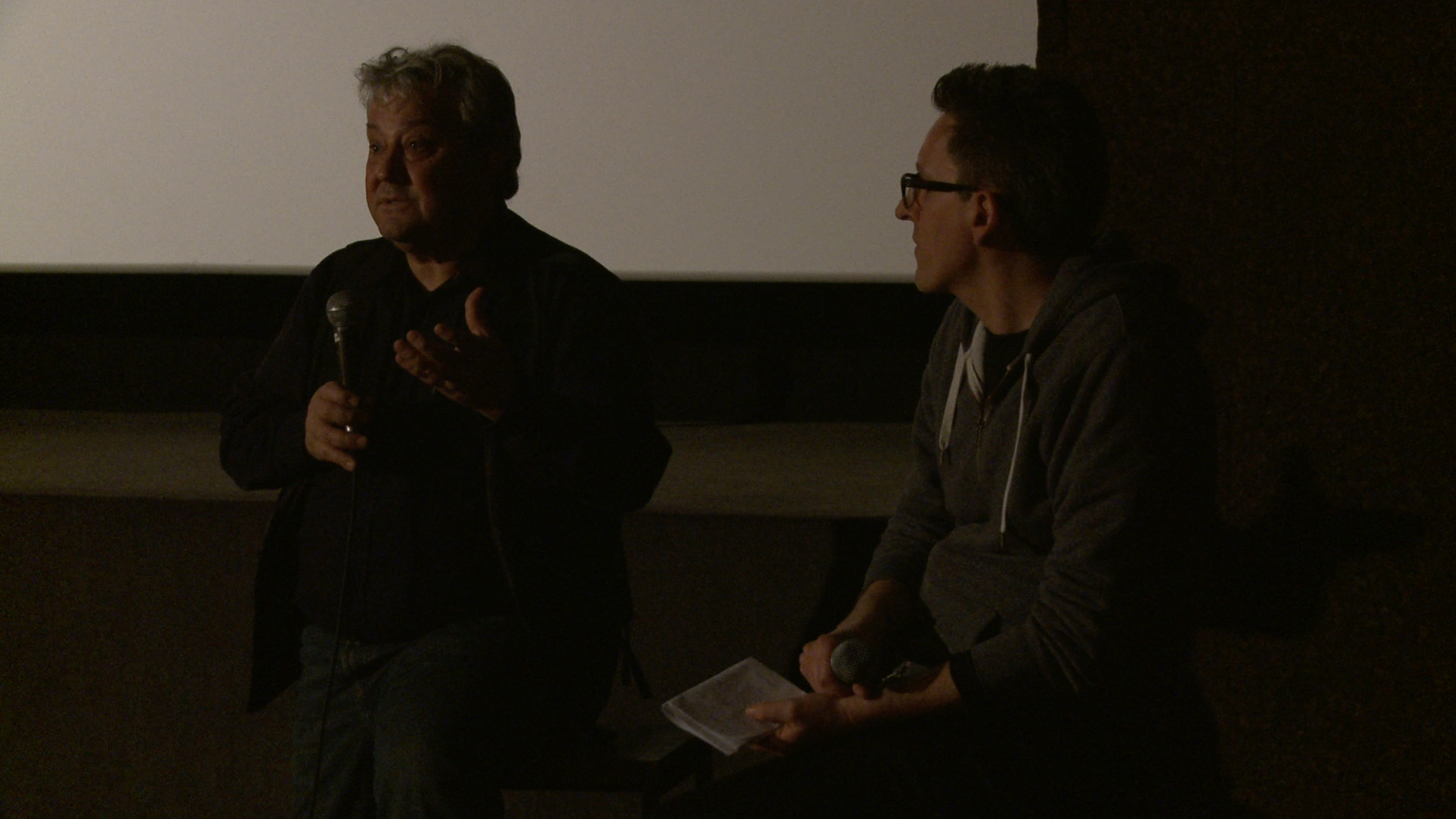
Michel Khleifi
Sphinx Cinema, Gent, 24 March 2016. In conjunction with the “Artist in Focus” programs around the work of Michel Khleifi (Courtisane Festival 2016).
“Within the weary group of Arab filmmakers who have worn themselves out by trying to reconcile art and
commitment, Michel Khleifi appears as the last romantic, even utopist, who thinks one has to film. It was
enough for him to stand by one single point: the function of a filmmaker is not to make propaganda, but to
take a just look at just situations and characters”
– Serge Daney
“What we see on the screen, or in any picture representing the solidity of Palestinians in the interior, is only that, a utopian image making possible a connection between Palestinian individuals and Palestinian land.” It has been thirty years since Edward Said wrote this passage on Michel Khleifi’s first film, Fertile Memory (1980). For Said, the film managed, with astonishing precision and beauty, to call up the memory of his own mother and all those who have had their land seized by the Israeli state. In seeing the moment when one of the women portrayed sets foot on her own land that has been ‘repossessed’ by Israelis but that she stubbornly refuses to sell, Said was reminded of how separated he was from the experience of an interior that he could himself not inhabit. “At once inside and outside our world” was how he described the experience of exile, one that Michel Khleifi himself is not unfamiliar with. In September 1970, Khleifi left the city of Nazareth in Galilee and found a refuge in Brussels, where he devoted himself to the art of cinema. It was only a decade later that he returned to the place of his birth to shoot Fertile Memory, the first full-length film ever to be shot within the disputed West Bank ‘Green Line’. It portrays the lives of two women bearing the weight of a double occupation: both the burden of Israeli domination and the restrictions of patriarchal society. By showing the lived complexity of life under occupation, in all its contradictions and its singularities, Khleifi’s film marked an important shift in the history of Palestinian cinema, one that he would explore further in his subsequent work. Rather than conforming to images of internal homogeneity and external Manicheism, such widely celebrated films as Wedding in Galilee (1987) and Route 181 (2003, made in collaboration with Eyal Sivan) continued to re-envision Palestine-Israel as a heteroglossic multiplicity of trajectories set out by individuals who manage to lift their thoughts and efforts to meet the challenges and violences imposed on them.
The films by Michel Khleifi (°1950) that are being shown in this program bear the traces of the turbulent times that Palestine-Israel has gone through in the past decades. Fertile Memory was finished just before the Lebanon war broke out, Wedding in Galilee was released shortly before the beginning of the First Intifada, and Route 181 was made right after the outbreak of the Second Intifada, which led to the siege of Gaza and the construction of the West Bank barrier. Today, violence is once again on the rise and a solution seems to be further away than ever. As the continuity of land increasingly disappears from the lives of Palestinians, and narratives claiming the inevitability and irreversibility of the Israeli-Palestinian conflict gain ever more traction, could Michel Khleifi’s ‘utopian images’ still have something to say?
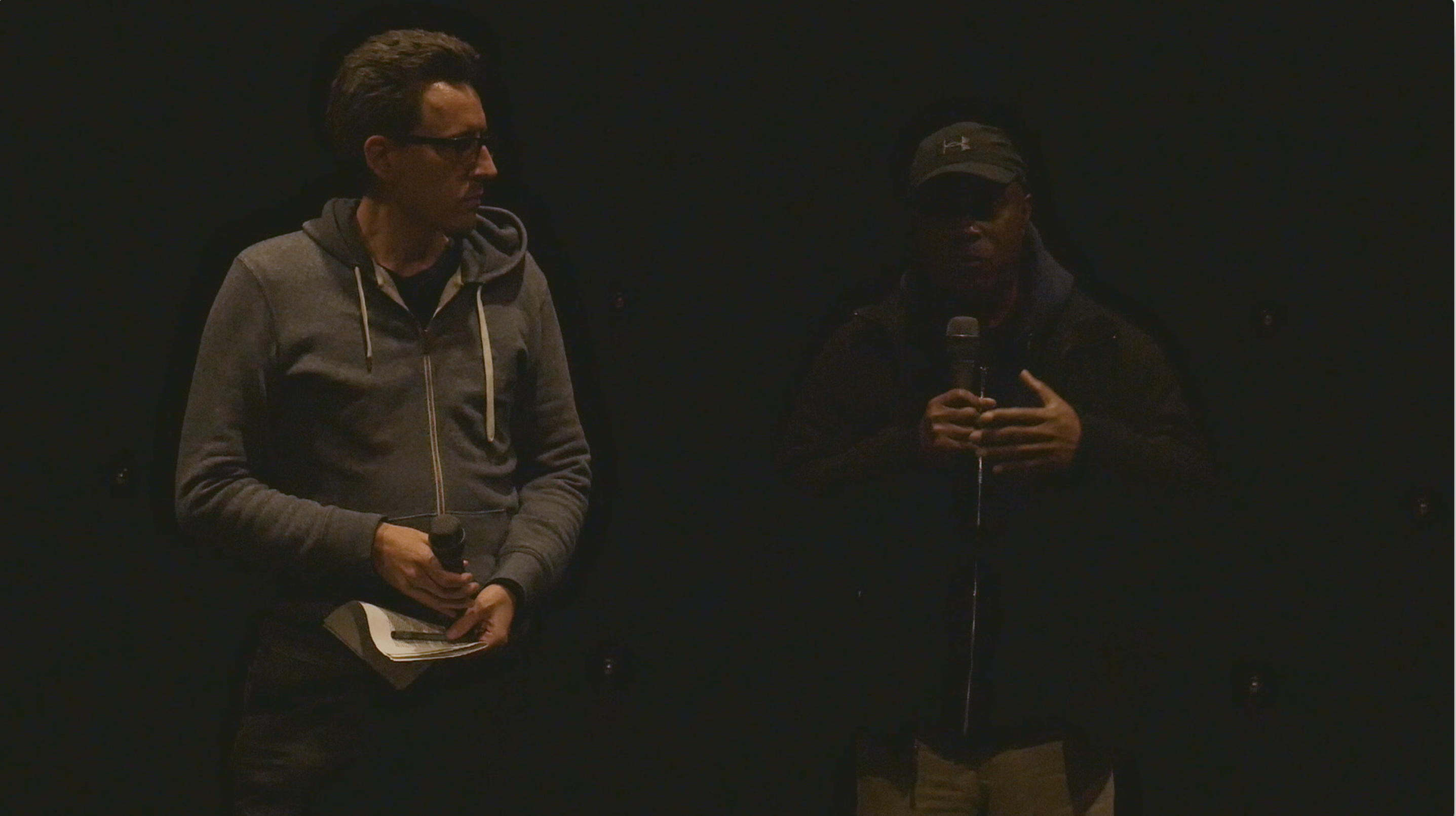
Charles Burnett
STUK / Cinema Zed, Leuven, 25 April 2016. Preceded by a screening of Killer of Sheep (1977). On 26 April Charles Burnett also presented Several Friends (1969), The Horse (1973) and When It Rains (1995) at KASKcinema.
“I think that, as I was growing up, disillusionment was inevitable. Growing up was nothing but battling dreams, hopes, expectations of what life would be. Responsibilities, also, had a lot to do with it, and the time allotted to us to do things played a part in it. I do not think that disillusionment is a bad thing. I think that you have to be able to get on your feet and make a choice—either you agree with the current trend or you don’t. You see, illusions are one thing and convictions are something else. Sometimes convictions and illusions get confused, sometimes they inform each other. Illusions and dreams may be lost, but convictions remain. I think that my convictions have been intact.”
– Charles Burnett
At the University of California in the late sixties and early seventies, at a time when the Black Muslims and Black Panthers were making their presence known on and around campus, a small group of filmmakers decided to make visible what had previously remained unseen in cinema: the experience of growing up black in America. They made films that followed neither the blaxploitation strain, with its pimps in platform shoes defying the white establishment, nor the sterile educational strands aimed at providing sociological explanations of inequality and difference. What emerged instead were cinematic portraits of everyday hardship and resistance, showing slices of life in the throes of precarity and discrimination. Of all the remarkable films that were made by this group, which was later designated as the “L.A. Rebellion” movement, one film stands apart for its captivating, timeless vision of a community finding ways to get by and live life in the dusty lots, cramped houses and concrete jungles of South Los Angeles. This film, which was made by Charles Burnett as his master’s thesis at the UCLA film school, is titled Killer of Sheep. It takes us down the corridors of everyday lives in the black ghetto of Watts, where past and future memories of riots are festering, where the brightest light seems to be coming from the shimmers of the “no way out” signs. But rather than setting out to uncover a socio-political reality that lies beyond the surface of what is present, it makes sensible what is too close up to see: the internal ghetto of emotional devastation, suffocation, exhaustion, disorientation. Desperation is always round the corner, but its looming threat is met with resilience, indicative of a capacity to escape from the slipstream of imposed realities and identities. Just like the blues lullabies that drift in and out of the frame, the film draws its strength from its oscillation between disillusionment and promise, between vulnerability and waywardness. Drawing inspiration from Jean Renoir’s The Southerner (1945) and James Agee’s Let us now Praise Famous Men (1941), Killer of Sheep manages to convey a heartfelt sense of dignity and possibility by the agency of nonprofessional actors and location shooting. Although the film was finished in 1977, it took thirty years before the music rights were cleared for commercial distribution. Since then, this tender humanist ode to urban existence is shining more brightly, and perhaps more urgently, than ever before.
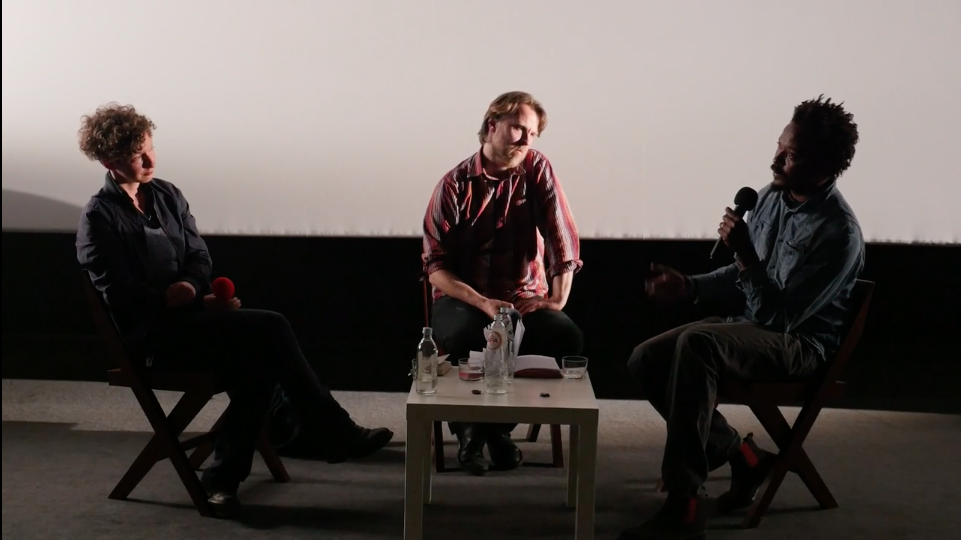
Sammy Baloji, Sven Augustijnen, Lotte Arndt
Galeries Cinema, Brussels, 23 May 2016. Preceded by a screening of Panorama Star of Congo (anonymous, CG, 1912, 26′)
In the context of the show “Sammy Baloji & Filip De Boeck – Urban Now: City Life in Congo” at Wiels (May 8 – Aug 14 2016), Brussels and the production of his film Pungulume, Sammy Baloji presented Panorama Star of Congo (1912). This anonymous film from the archives of the Royal Museum of Central Africa (Tervuren) is a first film made on the “geological scandal” that happened at Katanga (D. R. Congo). Sammy Baloji talked about the relationship between the exploitation of land and labourers and the exploitation of images and discourse. How can one arrive at an archaeology and anthropology of one’s own past and present?
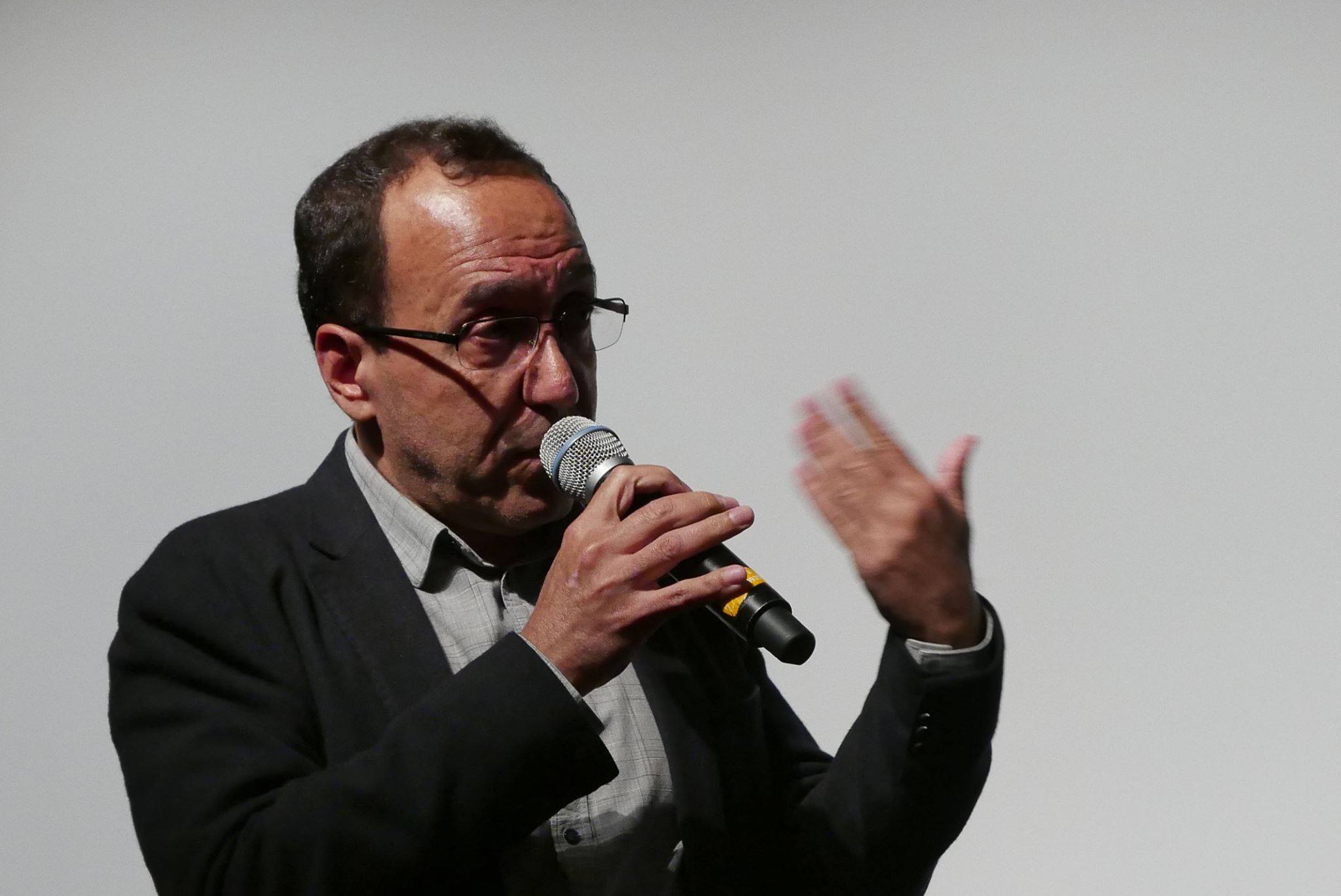
Abbas Fahdel
Bozar Cinema, Brussels, 11 June 2016. Preceded by a screening of Iraq Year Zero (2015). In collaboration with Cinemaximiliaan.
“En tant que cinéaste, je pense que le plus important se résume en deux mots : « regarder » et « garder »… J’ai regardé quasiment tous les documentaires irakiens. Le documentaire, c’est quoi ? On interviewe les personnalités qui sont impliquées dans la guerre irakienne : ex-ministre, ambassadeur… Ils racontent des choses, c’est vrai, mais ça ne nous apprend rien sur l’Irak, sur la vie en Irak et le quotidien. Ma démarche est complètement différente de celle d’un documentariste. Je veux montrer ce qui se passe vraiment là-bas, sans commentaire et sans voix off.”
“With this film I wanted to give a face to the Iraqi people,” says Abbas Fahdel about his most recent film, the magnificent Homeland: Iraq Year Zero. What does it mean to give a face to a people? How can cinema accomplish this trying task? Twenty-five years ago, while commenting on the coverage of the Persian Gulf War, Serge Daney remarked that one crucial element was missing: the eyes of the other. This was a conflict, he argued, that was basically a face-off between two ways of not making an image, as both camps pulled back to their own “visual,” consisting of nothing but a calculated flow of clichés and stereotypes which no longer testify to anything “other.” Shots without reverse shot, visualizations without information, winners without losers: nothing but an optical verification of power. In this sphere of pure signalization, nothing resists any longer.
Were things any different when, eight years later, the “coalition of the willing” decided to invade Iraq? Did we get see, here in “the West”, anything else but current event reports that participated in the installment of a palpable sense of insecurity and inevitability, anything else but non-stop non-information expressing the urgency of an invisible threat and the necessity of a calculated response? It’s not that there were no images, it’s that the images we saw were all too often anticipated by their meaning, reduced to illustrations of the words of those who decide which images are valuable and claim the authority to explain what they mean, trapping them in slogans, headlines, captions. It’s that most of these images were already part and parcel of the ubiquitous rhetoric that staged the righteousness of those avengers who waged war against the axis of evil in the name of infinite justice, a war that has cast a whole part of the world in a terrible chaos whose dreadful consequences are still with us. What was missing, what remains missing, are the faces and voices of those who are often spoken about, without being given the space to speak for themselves. Here lies the greatness of Homeland: in giving us to see so much of what is missing, in making us experience how the other is the same, bearing the same capacities of speaking and listening, but also how the same is itself other, always engaged in the measure of distance.
Measuring the distances and proximities between here and there, between now and then: this task might have also been what has led Abbas Fahdel to make the film. Born in Babylon, he moved to Paris at the end of the 1980s, when the war between Iraq and Iran was still raging, to study cinema at the Sorbonne (where one of his tutors was Serge Daney). It was only in February 2002 that he returned to Iraq to capture everyday life as his country prepared for war. Working clandestinely, he zeroed in on the intimate lives, daily activities and domestic conversations of his friends and family members, in particular his 12-year-old nephew, Haider, who would become the heart and motor of the film. A few days after Abbas Fahdel had returned to Paris, the war broke out, on 20 March 2013. When he managed to go back to Iraq a few weeks later, Baghdad had already fallen and hope for change for the better was quickly fainting. Against the grain, he went on filming the struggle for existence amidst turmoil and ruination, an endeavor which came to a tragic end when Haidar was killed by a stray bullet. Saddened by this violent loss, it took the filmmaker ten years to be able to watch the images that he had made and eventually make them into a film. After the work of mourning came the work of memory. The task of testifying to the lived reality of a past that continues to rumble in our present. The responsibility of bearing witness to the recent history of a country whose markers of memory have been systematically demolished. The quest to give the people of Iraq something other than the abstract and reductive identities that have been assigned to them: to give them a face of their own, a face that dazzles in all its persistence and resistance. For this and so much more, Homeland is not only praiseworthy: it is necessary.
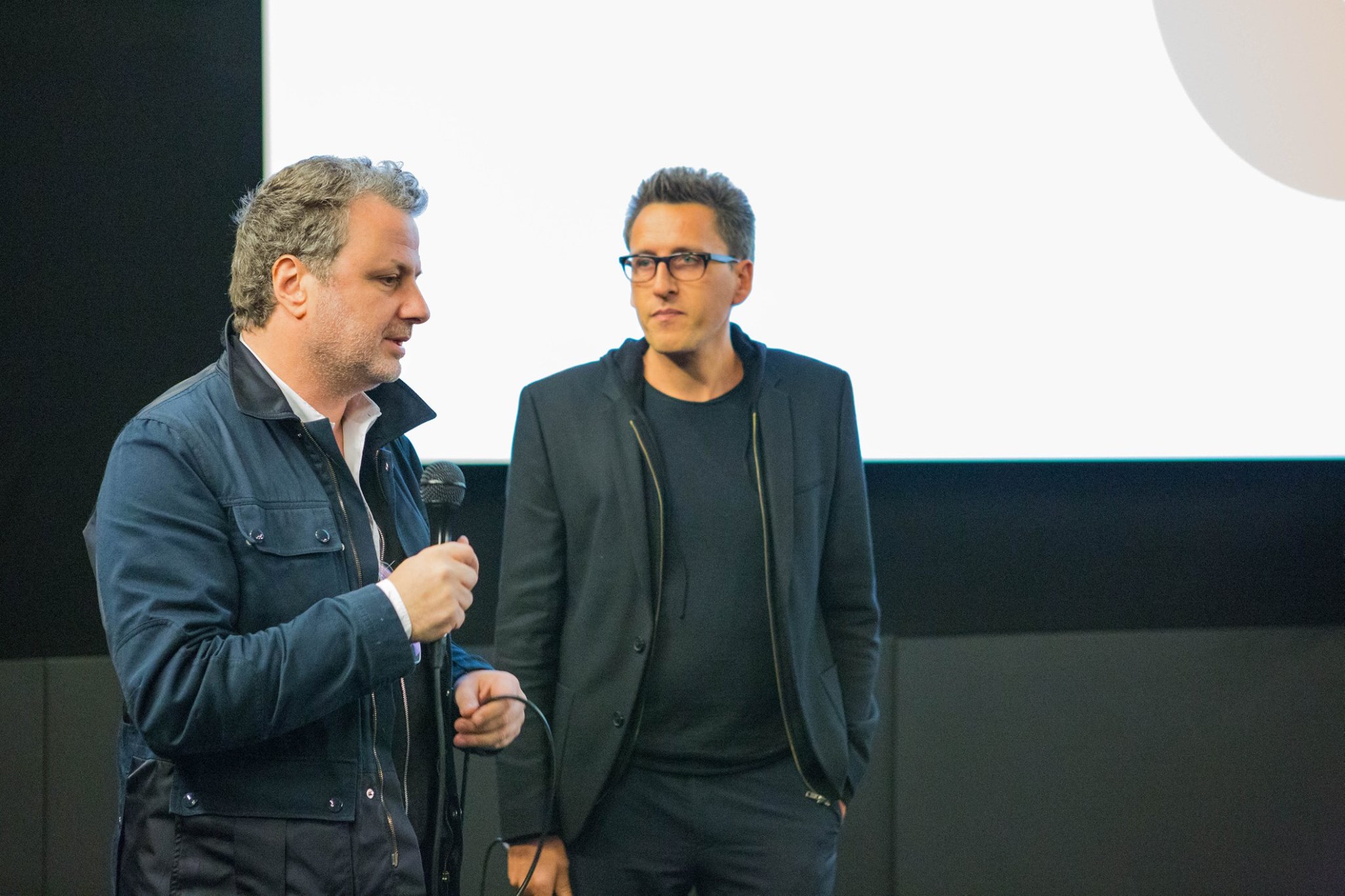
Joana Hadjithomas & Khalil Joreige
Cinematek, Brussels, 9 October 2016. Preceded by a screening of El film el mafkoud (The Lost Film) (2003) and The Lebanese Rocket Society (2012). As part of a retrospective dedicated to the work of Joana Hadjithomas & Khalil Joreige in the context of L’Age D’Or Festival 2016.
“We have always feared that it would start again. In fact, we never really believed it was over, hence our focus on latency, on the state of what exists in an unapparent manner but can, at any time, manifest itself. Traces, recollections that become ghostly and haunt, the photographs, the films and the documents, whether true or false. This latency coincides with an ambiguous relation to images, as we have been working on them since the end of the Lebanese civil war.”
What are the stories that can be told about a region that continues to be submerged in turmoil and chaos? What narratives are left to write when the thread of History is broken? How to devise fictions that can give new visibilities to places that have been overdetermined by images of violence and suffering? From places like these we tend to expect testimonies of suffering and death. We are used to consume info-bites larded with descriptive captions and knowledgeable commentaries. In the films and installations of Joana Hadjithomas and Khalil Joreige we get none of that. Instead, their work attests to what the violence inflicted by war has in common with the violence inflicted on its images: absence. A Perfect Day (2005) tells the story of a woman who has to decide whether to pronounce her long-disappeared husband deceased, entailing a transformation of a lack of visibility into a residue of words. In Khiam (2000-2007), a detention camp in South Lebanon, of which no images exist, is represented by way of spoken testimonies of six former prisoners. The Lost Film (2003) documents the artists’ search for a copy of their first film which has disappeared in Jemen, resulting in an interplay of images that are allowed and those that are forbidden, those that have been suppressed and those that have been preserved. Since the beginning of the 1990s, as Lebanon’s fifteen-year civil war came to an end, Hadjithomas and Joreige have explored the prism of invisibility and latency to tear the representation of their native country away from the dominant regimes of tele-information and propaganda that never stop producing images of war and wars of images. In defiance of the voices that lament that there are “too many images” or those that mourn that there is “nothing left to see,” their work has persisted in producing ways of seeing differently. This operation also involves the re-introduction of fiction in a landscape that supposedly no longer allows it. In Je Veux Voir (2008) fiction is introduced by way of two bodies, belonging to two different actors who play themselves: Catherine Deneuve, the French film star who wants to see the effects of the war of 2006 with her own eyes, and Rabih Mroué, the Lebanese artist-performer who acts as her guide while admitting to feel “like a tourist in his own country.” Together these two out-of-place bodies carve out a singular trajectory through the landscape of ruins and rubble, at the same time recomposing its visibility and displacing the expected sentiments of good-willed commiseration and reductive generalization. In The Lebanese Rocket Society (2012), the search for fictions takes us to a past time of dreams and aspirations, in particular to a moment when a group of students and researchers attempted to develop a Lebanese space program. How does this echo from a forgotten history resonate in a time when the dominant imaginary evokes missiles rather than rockets? Hadjithomas and Joreige take this question to its limits by building a rocket identical to the original and moving it through the streets of Beirut. Introducing fiction in the present by giving presence to what is absent: this remains the main principle of what has established itself as a singular art of resistance, an art that keeps on redrawing the landscape of the visible.
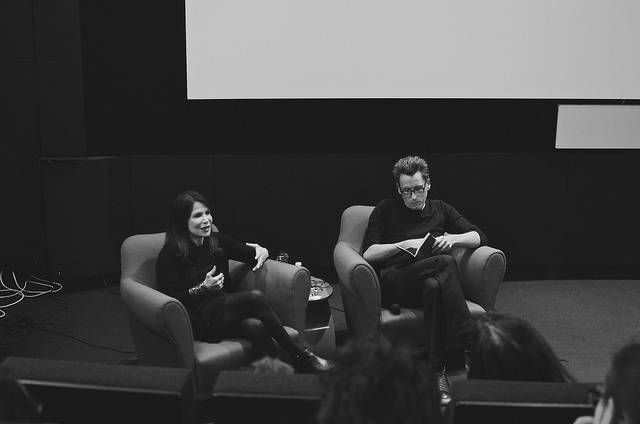
Lizzie Borden
Cinematek, Brussels, 3 February 2017. Preceded by a screening of Born in Flames (1983). As part of a retrospective dedicated to the work of Lizzie Borden, which also included a carte blanche program (03 > 28 February).
“I made the film because it seemed that people now were either completely cynical about the effectiveness of any kind of political process, or burned out and caught without any kind of language. It seemed important to re-ask certain questions, and to re-ask them as mediated through Europe, where the left is still a very vital force. If it relates to the sixties, it’s only because that energy of the sixties was so good – not just here but in Europe too. Where has that all gone?”
Bearing in mind the recent attempts of filmmakers such as Martin Scorsese and Baz Luhrmann to revitalize the spirit of 1970-80’s New York, the heydays of no wave, post-punk and “the get down” seem to making a swift comeback. Sure, the imagery of The Big Apple as modern slough of despond and vibrant beacon of creativity might have some appeal as backdrop for glistening nostalgia trips and epic rock operas, but its highly doubtful that the large-scale and hyped-up entertainment drama’s invading our screens these days can measure up to the untethered vitality and relentless waywardness of Lizzie Borden’s Born in Flames (1983). The recent restoration of this in Downtown NY and guerilla-style produced science-fiction fable manifests a radical vision that detonates like a molotov cocktail amidst an actuality that is marked by political unrest and reactionary tendencies. Perhaps as never before, the speculative vision of a post-revolutionary world order which, despite rhetorical promises of change and equality, indulges in systematic discrimination and oppression evokes multiple echo’s of recognition. No wonder that the film serves as a blueprint for many activist movements in the US: its zealous and kaleidoscopic portrayal of dissident struggle against heteropatriarchy and racism appears to have only gained in urgency and pertinence. Swinging between various perspectives and characters, with the likes of Kathryn Bigelow, Adele Bertei and Florynce Kennedy playing a version of themselves, and driven by the grooves and hooks of The Red Krayola en The Bloods, this challenging reflection on gender, sex, race and class confronts us like no other with the limitations and possibilities of resistance today.
Born in Flames is the focal point of an extensive film program that was composed in consultation with Lizzie Borden. Among the works in the program are two other rarely screened films of Borden: her debut film Regrouping (1976), a portrait of a woman’s group whose homogeneity of race and class Borden would later counter, and Working Girls (1986), a demystification of sex work that was initiated during the production of Born in Flames. Furthermore this program offers work by friends and compagnons-de-route like Vivienne Dick and Sheila McLaughlin, as well as a series of films that have served as source of inspiration or that evoke contemporary resonances.

Patrick Keiller
STUK / Cinema Zed, 1 March 2017. Preceded by a screening of London (1994).
“I had embarked on landscape film-making in 1981, early in the Thatcher era, after encountering a surrealist tradition in the UK and elsewhere, so that cinematography involved the pursuit of a transformation, radical or otherwise, of everyday reality. I recently came across a description, in Kitty Hauser’s Bloody Old Britain, of O G S Crawford’s photography: ‘Like photographers of the New Objectivity, clarity was his goal. Like them, he favoured stark contrasts, with no blurring or mistiness. His focus, like theirs, was on the object or the scene in front of him, which it was his aim to illuminate as clearly as he could… It was commitment that lit up his photographs… Such photographs suggest a love of the world that was almost mystical in its intensity.’ I had forgotten that landscape photography is often motivated by utopian or ideological imperatives, both as a critique of the world, and to demonstrate the possibility of creating a better one.”
What is the “problem of England”? In the aftermath of the Brexit and the ensuing rise of English nationalism this question might be lingering in the minds of many, but already two decades ago it was raised by a fictional character named Robinson in what became a trilogy of films examining the economic and cultural doldrums of neoliberal England. This rather unreliable character who is never seen but only heard of by way of an unnamed and equally unseen narrator acts as a modern-day flâneur in the tradition of Baudelaire, Breton and Benjamin, dwelling on the hidden stories and forgotten histories of his everyday surroundings, in pursuit of a “problem” whose signs he hopes to find reflected in the landscapes and cityscapes of “dirty old Blighty”. The first film in the trilogy, London (1994), tracks the wanderings of the eponymous character and his narrating companion through Britain’s capital at a time when the city was marked by a series of IRA bombings and the Tory party was surprisingly re-elected for the fourth consecutive time. Drifting from Soho, where the likes of Montaigne and Mallarmé lived in exile, to Vauxhall, where the ghosts of Holmes and Watson still roam, from the Stockwell flat where Apollinaire stayed to the Savoy suite which gave Monet his view of the Thames, the film follows the pair as they engage in exercises of psychic landscaping and free association, in an attempt to wrestle themselves free from the constraining patterns of a city which is, as Robinson claims, “under siege from a suburban government which uses homeless, pollution, crime, and the most expensive and run down public transport system of any city in Europe as weapons against Londoners’ lingering desire for the freedoms of city life”. If London has failed, Robinson suggests, it might not only be because of the city’s civic void and invisible social life: perhaps its failure is deeply rooted in a typical English fear, a fear of “Popery and socialism” and of “Europe, that had disenfranchised Londoners and undermined their society.”
Three years later, just before the general election that brought New Labour to power, Robinson in Space (1997) shifted the field of inquiry from England’s capital, one of the metropolitan centers of global financial capitalism, to its ex-urban landscapes of globalized production and consumption. Inspired by Daniel Defoe’s A tour thro’ the whole island of Great Britain, Robinson and his companion embark on seven voyages, beginning with a trip downriver from Reading to the Thames estuary at Sheerness, before striking out on journeys to other major ports, including Bristol, Liverpool, Portsmouth and Hull. In contrast to the familiar critique which considers the UK’s economic decline as the result of its old fashioned “gentlemanly capitalism,” what the duo’s expeditions reveal is the advent of a newly constructed landscape of manufacturing plants, business parks, retail sheds and shopping malls, bristling in the hinterlands of cities that are said to have failed to flourish as post-Fordist enclaves for finance, leisure and service economy. In the third travelogue, Robinson in Ruins (2010) the mythology of Anglo-Saxon capitalism is explored further by focusing on issues of mobility, belonging and displacement, and their relationship with landscape in a context of economic and environmental crisis. The “ruins” Robinson finds himself dwelling through turn out to be the wreckage of a neoliberal culture that fails to accept its own demise. But despite this looming deterioration the flâneur leaves us with sparkles of hope, finding “imperceptible tremors of an inconceivable future” amidst depopulated landscapes where “non-human intelligences” silently and stubbornly refuse to bend to the brutality of capitalism.
What can be seen, then, in the work of Patrick Keiller is an exploration of the potential of “architectural cinematography” to not only develop a critique of the configuration of space, but furthermore to imaginatively transform it. In this way he places himself in a long lineage of artists and thinkers who have expanded on the surrealists’ notion that spaces can be changed by displacing the way we look at them. Perhaps Robinson, the peripatetic scholar, merely acts as a stand-in for the more delirious side of the architect-turned-filmmaker’s own expeditions through the spatial arrangement of neoliberal England, in a diligent quest to trace the ever-changing contours of a “problem” that is seemingly not going to go away any time soon.

Jacques Rancière
Minard, Ghent, 30 March 2017. In the context of the Courtisane festival 2017.
“An infinity of emotions is created in cinema — gestures, gazes, movements of bodies, possibilities for bodies to relate to one another: this is the treasure we should cherish. It’s fundamental with regard to the formatting of fictions, of expressions, of expected effects. This is why cinema has to be thought of as a global historic adventure — we lose sense of it if we continue to focus on the “releases the year”. Rather than dabbling in actuality we ought to take up cinema as a whole, in relation to all its potentialities, which assumes a real militant cinephilia. We should rethink cinema as part of a history of possibilities of life.“
How can cinema challenge us to imagine something other? This question has been stirring Jacques Rancière ever since he was taken in by the wave of cinephilia that churned through Paris in the 1960s. From his first interview in Cahiers du Cinéma in 1976, via his own series of writings for the same magazine between 1998 and 2001, to the publication of La Fable cinématographique (2001) and Les écarts du cinéma (2011), cinema has remained an important strain throughout his work, linking his dwellings on the shores of politics with his ventures into the realms of aesthetics.
How can cinema be thought of in relation to these two ever-shifting and intertwining landscapes, as a terrain of struggle that bears the original responsibility of politics: the organization of dissent? How can cinematic arrangements of appearances open up spaces of play where the consensual order of things can be questioned and displaced? How can they unsettle the common sense that proposes a sense of reality in conformity to what is already known, to what it cannot but be? In other words: how does cinema allow for an emergence of fiction?
In light of a torpid reality which is said to trump all possible fictions, couldn’t measuring the changes in the nature of cinematic fiction and its criteria of necessity, consistency and credibility say something about the way we make sense of our time? In variance with the verdicts of those who continue to bewail the reign of the spectacle and call for a revenge of the real, could it be that it is not the experience of the real that is waning, but the possibility of fictioning? During this conversation, we will take a selection of recent films as a starting point for an exploration of the possible relations between cinema, fiction and politics, and the continuous negotiations between reality and appearance, between what is and what could be.
Cinematek, Brussels, 8 April 2017. Preceded by a screening of Hour Glass (1971, 13′) and Bush Mama (1975, 97′). As part of a retrospective dedicated to the work of Haile Gerima, which also included a carte blanche program (08 April > 12 May).
“To this day when I watch Bush Mama, I’m in tears. Not because of my talent, it’s the talent of the community; but those things were real to me when I was a student. I see all my films as a staircase of emotional evolution. They have my dreams, my nightmares, my wishes, my fantasies, my rage, and so they’re never obsolete. I was responding to the time as a black man and how I felt excluded by the system that was prevailing. And many people feel that now. And so to me, it goes back into not doing movies for anybody else. Say this is a story I want to tell before I pass from this earth, and the film becomes relevant, however imperfect technically it is.”
“Play it again, Sam.” We certainly remember the catchphrase. We might even remember the song Sam is playing, just before Ilsa and Rick come to face each other for the first time since they parted ways many years before. But how much do we actually remember of Sam? What existence is this character given, besides being assigned the role of exotic sidekick? What kind of history is ascribed to him, besides having carried his piano all the way to Paris and Casablanca to accompany a love story between white folks? These were the questions that animated the debates that were held among some of the students of the University of California at Los Angeles in the late 1960s, some of whom would eventually set out to correct the distorted and orphaned representations of black people in Western cinema. Taking their cues from the wave of “Third cinema” which had emerged in Latin-America, Africa and elsewhere, these filmmakers regarded it as their mission to break free from the ideological and cinematic entrapment which tends to keep everyone in their place, tied up in their racial and social identities. One of the most diligent members of this movement, which has been branded “LA Rebellion”, is undoubtedly Haile Gerima. Born in Gondar, Ethiopia in 1946, he left for the US in 1967, where he studied theater in Chicago before enrolling in the film department of UCLA. It is there that he gave shape to his first short films, Hour Glass (1971) and Child of Resistance (1972), which were infused with the legacy of the Black Power and Black Consciousness Movements and the influence of the work of Frantz Fanon, Malcolm X and Angela Davis. The call for resistance against systemic injustice is even more pronounced in Gerima’s thesis film, Bush Mama (1975), which chronicles the political awakening of Dorothy, a welfare mother living in the Watts neighborhood, who decides to stand up against the economic, political, and social oppression that she and many others like her are subjected to. From the very start of the film, when we get to see actual footage of the LAPD harassing Gerima and his crew during the shooting, one cannot help feeling that the ongoing struggles in the US carry with them the ghosts of former struggles, and that today’s activist movements would not be the same without the politics of resistance which emerged after the Watts Rebellion of 1965. The liberationist, anti-colonial discourse that was so prominent at the time would also have a profound effect on another, equally powerful film that Gerima conceived during his time at UCLA, a film which saw him tracing back what he called “the actual footprints of my youth.” Shot during a stay of two weeks in his native Ethiopia in the tumultuous days following the overthrow of Haile Selassie, Harvest 3000 Years portrays a family’s struggle for survival under a feudalistic landowner, revealing itself as an anti-colonial allegory of class exploitation and a tribute to the collective dissent against “the harvest of centuries of oppression.” Since 1975, Gerima has tirelessly continued to explore the conditions and struggles of black existence in the US as well as the histories of oppression and empowerment in Ethiopia. His singular research has found a provisional culmination in Teza (2008), a film he started writing at UCLA, chronicling three decades in the life of an Ethiopian man who leaves his home in search for knowledge, only to find himself anguished by his country’s social and political crises.
STUK Leuven, 19 April 2017. Preceded by a screening of 48 (2009, 93′).
“Watching the images unfold in the archive, I was thinking that these men could be my brother, my uncles, or even a son of mine. A disturbing thought that obliged me to think much more deeply about the history of my country. I came to realize that there is a reason for the colonial wars having been a kind of taboo in Portugal for the first three decades after the Revolution: the people who had been in Africa fighting in the colonies and conducting the massacres were the very same people who carried out the revolution.”
Having grown up in the wake of the Portuguese Carnation Revolution, which developed during the years following the death of António de Oliveira Salazar in 1968 and toppled his dictatorial regime in 1974, Susana de Sousa Dias became fascinated with the images taken by representatives of the regime during its forty-eight years in power. Since 2000, when she was first allowed to explore the Salazar regime’s official archives, de Sousa Dias has endeavored to find cinematic forms that can do justice to the realities of oppression within the so-called Portuguese New State (Estado Novo). Her encounter with portraits of political prisoners in the archives of the former Political Police (PIDE), as well as newsreels, war reports and documentaries that were made for the Ministry of Propaganda, has resulted in a remarkable series of films that aim to explore the workings of the authoritarian regime by way of its own images: Natureza Morta / Still Life (2005), 48 (2009) and Luz Obscura / Obscure Light (2017). How does one arrive at showing images without rendering acceptable that which they show, on this occurrence the violent machinery of a dictatorial system? How to criticize these images without reaffirming the power invested in them? The second film in this series, 48 (the title refers to the period of the dictatorship between 1926 and 1974) is perhaps the most radical response to this challenge, in that it offers nothing else but still images of faces and recordings of voices of those who were imprisoned by the regime. Mugshots taken on the moment of capture are accompanied by testimonies of survivors, relating their experience of the brutalities they endured in prison and the insidious system of oppression that kept the dictatorship in place for so long. But De Sousa Dias also manages to reframe and displace the meaning of these images by transforming what were originally small, generic images, useful for identifying enemies of the regime, into large-scale portraits that accentuate the dignity and shared humanity of these women and men whose name and age remain unknown to us. “The film tries to expand the duration of that fraction of a second, in which the pictures were taken, and in which the prisoners opposed their oppressors, face to face”, says de Sousa Dias. “The expression on their faces, this look of challenge is the last space of freedom that was left to them in this moment.”
